Why

©MARVEL 2023 GENETIC TESTING
you consider it? We salute our medical warriors
WHAT IS IT? FND HEROES ASSEMBLE HEROES ASSEMBLE AFL KICKING GOALS FOR INCLUSION RISKY PLAY
Should
FND
we need
step back TUBE FEEDING WALKERS REVIEW HOW TO WRITE A CARER IMPACT STATEMENT
FOR YOUR NDIS REASSESSMENT ISSUE 34 / AUTUMN 2023
for a smoother stay HOSPITAL TIPS
to
PREPARING
Hacks

is a website where people living with disability can find and connect directly with independent support workers.

By joining Mable, you’re able to:
Choose your independent support worker from over 12,000 people offering care and support services.
Choose which services you need from the wide range offered through our website
Choose when you receive those services so you can fit the support to your schedule.
Choose with confidence knowing all workers have the relevant Police and reference checks.
Mable
HELLO
Hospital.
Unfortunately, many of us have spent too much time there with our kids. Some of us have probably spent too much time there ourselves, as well.
This issue is themed around medical disability and conditions related to them.
Thankfully, hospitals are making huge strides in their inclusion and welfare programs, as well as actively seeking ways to improve communication and understanding of people with disabilities and neurodivergences.
But, in those late nights and worry-filled moments in hospital, it’s hard not to feel overwhelmed and lonely.
You are NEVER ALONE.
Our Source community is always here, always by our phones. Reach out via Source Mama on socials and connect into the wealth of knowledge, advice and support that is waiting online.
We’ve harnessed some of their collective wisdom in our Hospital Tips article, which will hopefully help make your next hospital visit slightly easier… and with cheaper coffee!!!
And we honour the legacy of Carter, who played a pivotal role in shaping the virtual reality program being trialled at three hospitals.
Finally, on a personal note, this will be my last edition at the helm of Source Kids magazine.
I am moving interstate with my little family, chasing a tree change. Stay tuned for more on my crazy adventures in coming editions!
But for now, I want to thank you all, our incredible, dedicated warrior parents, carers, educators and therapists for your support of the mag, expos and most importantly, your support of each other.
It has been such a humbling and enriching role, and my absolute privilege to meet you in-person at expos or online late at night on Facebook. Thank you for the chance to tell your stories and celebrate these spectacular kids of ours.
I’m so very proud of what we have achieved, together.
Much love,
MAGAZINE
HEAD OF CONTENT:
Rebekah Devlin
PRODUCT EDITOR: Kelly Wilton
HEAD OF SALES & BUSINESS DEVELOPMENT: Matthew Rainsford, matthew@sourcekids.com.au
0409 418 362
HEAD OF EVENTS: Naomi Sirianni, naomi@sourcekids.com.au 0447 755 043

GRAPHIC DESIGN: Emma Henderson
PUBLISHER/CEO: Emma Price

2023
COVER: Courtesy of Supertee: Marvel Edition, which allows sick children to connect with the Marvel characters’ superpowers to channel their own strength and courage. The range features Captain America and Captain Marvel designs, and is MRI and PET Scan-friendly with shoulder and side easy-access panels. supertee.org.au/marvel

5 We Love 7 16 surgeries in 16 years – Jacob's remarkable story 12 Just what the doctor ordered – inclusive hospitals 15 Future Stories virtual reality project 18 Hospital tips from parents who know 20 Source Award winners 24 Tube feeding – a lifeline to better health 28 A bond that binds 30 Product guide – tube feeding accessories 34 Genetic testing –what you need to know
40 News in brief 40 Competitions 42 Autism and cooccurring conditions 48 How to nail your NDIS Reassessment meeting 50 What to write in your Carer Impact Statement 54 FND - The neurological disorder you’ve probably never heard of 58 Nell’s story of FND 62 AFL – a game for every ability 66 Risky business –why risky play is just what your kid needs 68 Watches and reads 70 Product Review –Walkers 62
AUTUMN
contents
Bek Editorial and advertising in Source Kids is based on material, written and verbal, provided by contributors and advertisers. No responsibility is taken for errors or omissions, and opinions expressed do not necessarily reflect those of the publisher. All material in Source Kids is subject to copyright provisions. No part of this publication may be reproduced without written permission by the publisher. SOURCE CO. PTY LTD: PO Box 690, Noosaville QLD 4566. ABN 63 650 961 489 sourcekids.com.au Send all letters and submissions to info@sourcekids.com.au
4 SOURCEKIDS.COM.AU
PLAYSTATION 5 - NEWEST ADAPTABLE CONTROLLER IN THE PIPELINE
Sony has launched Project Leonardo for PS5, a highly customisable accessibility controller kit. It is designed to help players with disability play more easily, more comfortably and for longer periods. Players will be able to customise their controller, including repositioning the analogue sticks close together or far apart. As it doesn't need to be held, players will also have the option to lay it on a wheelchair tray. blog.playstation.com

BUILD IT BOARD
A great way for kids to build on their foundations of recognising letters, words and writing. A desktop magnetic ‘Build it Board’ with letters to create and practice building and writing will help develop skills over time. illumelearning.com.au


THE FIELD JOBS – LEVEL THE PLAYING FIELD

If you are a parent to a teen or young adult looking for employment opportunities, then The Field is for you. One of the founders is Dylan Alcott, whose passion for meaningful employment for people with disability stems from his own experience of adversity at a young age. The Field has a portal for both job seekers and employers, connecting people with disability who want to work with organisations that want to hire more inclusively. thefield.jobs
PJAMA BEDWETTING CLINIC
Designed to accompany its alarm, the Pjama Bedwetting Clinic is an app developed with Swedish healthcare professionals to give you the best chance of success. Simply record each night’s outcome in the app, which analyses the results. You then receive customised feedback and support on how you and your child are going during the treatment, with individualised advice and tips to help decrease accidents. pjama.com.au

ISSUE 34 | AUTUMN 2023 5 FUN STUFF



T: 1800 282 001 E: sales@caremed.healthcare W: www.caremed.healthcare Customised Pearl White EN9-Nino featuring 1100mm high gates with Meshtex padded sides. Scan the QR code to find out more about our Nino Range Explore the endless options.. Pick your colour Choose your width Measure required length Create your style
16 SURGERIES IN 16 YEARS Our Golden Boy
Sixteen surgeries in 16 years – it’s difficult for any parent to imagine. And it never gets any easier. That’s why this family choose to count the moments instead – and make the moments count.
Much like the condition that changed their lives, the journey of parenting two special needs children, has been uncharted for Kylie and Aaron.
Their firstborn, Jacob, now 16, was born with Goldenhar, a rare craniofacial syndrome, while their daughter Jasmine, 15, is autistic and has ADHD.
Goldenhar syndrome causes the incomplete development of bones in the face, mainly affecting the ear, eye, nose,

lips, and jaw on one side. The condition can also cause abnormalities in the spine and ribcage, and problems with the heart, kidneys, lungs, and nervous system.


While most people with Goldenhar are affected by just a few, often mild symptoms, Jacob ticks almost every box – a uniqueness which gives him celebrity status among the medical fraternity. Apart from normal functioning kidneys, every part of his body is impacted.
Relatively new research has uncovered the hereditary nature of Goldenhar syndrome, with each child having a 50-50 chance of inheriting it. Genetic doctors have told Kylie they suspect the gene may have come from her. With a

Born with rare congenital condition, Goldenhar syndrome, Jacob can count as many surgeries as he can birthday candles. But Jacob’s family just count themselves lucky.
MY STORY ISSUE 34 | AUTUMN 2023 7
“It’s your journey and no one else can walk your path.”
drop lip on the left side and skin-tags on her left ear, Kylie’s symptoms are mildly similar to Jacob’s, enough to map the gene back one generation, but beyond that, they have no idea where Goldenhar has come from. However, they do know that if Jacob or Jasmine have children, they could be affected.
A BEAUTIFUL BABY
In 2006, Kylie gave birth to Jacob, four weeks early. A scan in utero had shown a curve in Jacob's spine, and Kylie and Aaron had been prepared to expect mild scoliosis. But nothing could have prepared them for the severity of abnormalities, and the life-altering diagnosis.
Soon after birth, Jacob was whisked off to the neonatal unit for tests, but Kylie remembers the joy and elation that came before all that –the beginning of true, unconditional love.
“He was our first baby,” Kylie says tenderly, “he was beautiful.”
She laughs as she recalls the moment when they realised Jacob had no left ear.
“It looked like a little cauliflower, and Aaron said maybe it was stuck and would unfold after a while.” Kylie knew otherwise, and that their baby boy
came exactly as he was. “I just giggled, and kept saying, ‘baby is so cute’,” she says.

The next day when doctors told Kylie and Aaron that they suspected Goldenhar, and the severity of Jacob’s condition began to unfold, a missing left ear became the least of their worries. Jacob also had no left side jawbone, multiple hemi vertebrae in his spine, neck fusion, submucous cleft palate, tongue ties, 11 ribs on one side and 14 on the other, an extra collarbone, anal stenosis, deafness, low vision, and four holes in his heart.
A CHANCE TO EDUCATE
It’s no wonder that Jacob has been a case study to help doctors learn about this rare and complex condition, something Kylie and Aaron positively encourage.


“We’ve always gone into it with an educating mindset. So many doctors have never heard of it (Goldenhar), and the more they learn, the better the future will look for Jacob and other kids,” Kylie says.
Some of the doctors who treat Jacob, might have seen a handful of kids with Goldenhar in a 20-year career, others, have never even heard of it. This can be terrifying when Jacob comes up for complex surgery, like the procedure in 2021 to give him a new left ear. But,
Kylie and Aaron approach each and every surgery the same way – hoping, trusting and reminding themselves to “just breathe”.
HIGH-RISK SURGERIES


Jacob’s first surgery was at just sevenmonths of age, where he had a gastrostomy feeding button put into his stomach (so he could be tube fed without a nasal gastric tube) and anoplasty to fix his stenosis. Despite knowing Jacob needed these surgeries and they would reduce his pain, Kylie and Aaron were told there was a high chance their baby would not survive his first surgery. But, that was an outcome neither parent could begin to imagine, let alone prepare for. Kylie remembers repeating the words, “he’ll be fine”, over and over in her mind (something she still does through every surgery).
“You can’t ever prepare yourself,” Kylie says. “While they’re in surgery is the worst time for the parent. You just have to hope with every ounce of your body that they’re fine”.
MY STORY
8 SOURCEKIDS.COM.AU
“So many doctors have never heard of Goldenhar –the more they learn, the better the future will look.”
More than a decade on, and many more surgeries behind them, Kylie still feels like that young mum trying to remember to breathe. The anxiety mounts up and every minute waiting for the news that her boy has made it through, feels like the first time. “It never gets any easier,” she says, “but then after, relief floods through you, you take a breath, and then get ready for the next part… recovery.”
YOU ARE NOT ALONE



Kylie hopes that by hearing Jacob’s story, other families living with Goldenhar syndrome, won’t feel so alone. She knows what it’s like to feel isolated – the countless hours in hospital waiting rooms, the long days mentally preparing for high-risk surgery, and the long weeks adjusting to new variations of ‘normal’.
“In the early days, it was very lonely. People tried to understand and have empathy, but until you live it, you really can’t,” she says.
These days, Kylie and Aaron have a close, supportive group of friends, but they’ve also come to realise, that they are on their own journey. Sometimes friends will tell Kylie about minor worries, like their child falling over and scraping their knee or having a cold, and then stop midsentence and apologise. But Kylie is always quick to remind them not to compare their journey with hers. “What is hard for you, is hard for you,” she says, “it’s your journey
and no one else can walk your path. My son having 16 surgeries is our norm. My daughter having autism and ADHD, that’s our norm.”
A MOTHER’S INTUITION
Home in Tassie after surgery number 16, and some post-op complications, Kylie is grateful for Jacob’s incredible strength and resilience, and her finely tuned “mother’s intuition”. After complex spinal surgery, where they removed some hemi vertebrae and straightened Jacob’s spine, the recovery didn’t look like Kylie knew it should. Despite Jacob’s temperature being in the normal range, Kylie knew he had a fever, and she didn’t let up until the doctors listened. Thankfully, she didn’t. Jacob’s bowel had stopped working and his liver and kidneys were not functioning properly. With the correct treatment, he was soon on the road to recovery and able to go home.
Kylie insists that “if you think your child is not right, you’re not wrong. They (doctors) might have a medical degree, but you know your child best,” with no disrespect intended to the incredible doctors who help keep Jacob alive. “Don’t ever, ever stop fighting for them,” she says.

He may have the most extreme symptoms of any child in Australia with the same condition, but Jacob’s smile shows no signs of adversity. Every day his family is inspired by his bravery – the way he manages his pain, disappointments,


frustrations, and living a very different life to other kids his age. Kylie says, in some ways Jacob is just a “normal” teenager, and they have the usual battles over too much gaming, and not enough showering. But the way Jacob approaches life, with positivity, little complaint, and nothing but a couple of Panadol for the pain a week after major surgery, is something extraordinary. “He’s our inspiration and we are so proud of him,” Kylie says, “when we start to go through a tough time, we think, ‘if Jacob can go through what he has with such grace, dignity and courage, then we can get through anything too’.”
He really is their golden boy.
By Andrea Viney
ISSUE 34 | AUTUMN 2023 9 MY STORY
“They might have a medical degree, but you know your child best. Don’t ever, ever stop fighting for them.”
How can the new Astris PME website help you?
















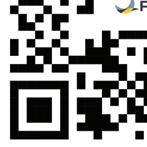




















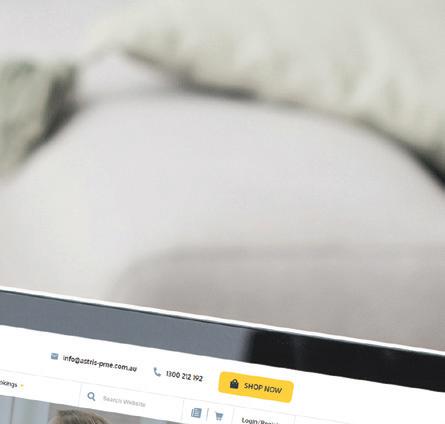

Introducing our newly redesigned website at astris-pme.com.au. Featuring an interactive client portal where you can keep track of your equipment, request service or hire, or make a trial appointment with one of our Specialist Consultants. It’s easier to navigate and find the information you need. The new design has been created with our clients in mind and features product information, brochures, helpful blogs, and much more.
As market leaders in special needs equipment in Australia, Astris PME can provide solutions that match the needs of people with a disability, and help therapists achieve the best outcomes for every client, in every age bracket. Please call us to enquire about any of the products and services we offer – we will be happy to help!








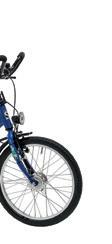



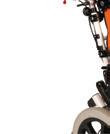


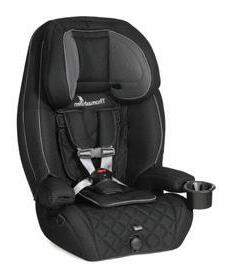






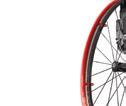










1300-131-884
astris-pme.com.au Showrooms in Sydney • Melbourne • Young • Canberra • Brisbane • Newscastle
|
FREE TRIALS Edition! Scan the QR code to access the brochure Manual Wheelchairs Outdoor Recreation Car Seats Alternate Seating Tilt-In-Space Wheelchairs Gait Training Wheelchair Seating Systems Powered Wheelchairs Hygiene & Bathroom Trikes & Bikes FREE DOWNLOAD































































24-Hour
APEX Mobility supplies Australia and New Zealand’s largest range of specialised Assistive Technology equipment and supports for 24hr positioning, mobility and care. Schuchmann Malte Rifton HTS Rifton Trike 10AM12PM 8-10 AM 6-8 AM 9PM6AM 12-2 PM 2-4 PM 4-6 PM 6-9 PM Klaxon Klick Ormesa Dondolino Volter xRover StabiloBed Sleep System SOS P Pod DEALERS THROUGHOUT AUSTRALIA AND NEW ZEALAND apexmobility.com.au 1300 212 192
Positioning
Just what THE DOCTOR ORDERED
Avisit to hospital is rarely something to get excited about, unless of course there’s a bundle of joy on the way.
It is often a time of tremendous stress, worry, pain and emotional turmoil.
And unfortunately, disability can add an additional layer to all these areas. Many of our children and young adults experience lengthy hospital stays, invasive tests, procedures, fittings and emergency situations. So, it’s vital that hospitals understand and cater for their unique needs.
Too many of us have experienced lessthan-ideal care from undertrained and unsympathetic medical professionals, but thankfully, hospitals all around Australia are putting genuine efforts into improving patient care.

“Equitable access to care for all children is an ongoing priority,” says Children’s Health Queensland.
In 2021, Children’s Health Queensland became the first paediatric healthcare provider in the southern hemisphere to be awarded ‘Gold Certification for Excellence in Person-Centred Care’ by Planetree International.
“Our unwavering commitment to the best outcomes for Queensland kids means we are always improving the way we care, teach and research,” CHQ says proudly.
“Our purpose is to improve the health and wellbeing of children and young people through world-class care, research, advocacy and leadership.”
CHQ has compiled this list of initiatives on offer across some of its hospitals, including the incredible Queensland Children’s Hospital.
These are services you may be able to access at your local hospital – or perhaps petition to make them available.
STAFF TRAINING AND COMMUNICATION INTIATIVES
In February, CHQ’s Child Development Service ran the first of a series of educational sessions for clinical and nonclinical staff, to increase understanding of ASD and how hospitals can best support autistic children and their families when they attend hospital as an inpatient, outpatient, or unplanned emergency visits.
Clinicians also actively seek advice from families and patients on what works best
when communicating with their child, so individualised adjustments can be made for a better healthcare experience.
QUEENSLAND SPECIALIST IMMUNISATION CENTRE
Queensland Children’s Hospital provides vaccination advice and support for children with complex medical conditions, children who have experienced, or are at risk of an adverse event following immunisation, as well as children who have had failed attempts to vaccinate due to needle-phobia or anxiety. The team of immunisation specialists includes senior medical, nursing and allied health staff who have a range of distraction tactics and tools to support children to get their vaccinations, including virtual reality goggles and other sensory technology.
Once intimidating, cold and uncompromising, hospitals have made huge strides in becoming more inclusive, listening to parents’ concerns and embracing the total wellbeing of a patient, not just their immediate health needs.
12 SOURCEKIDS.COM.AU
MUSIC THERAPY
QCH has a team of music therapists who engage children through music making, singing, therapeutic music listening and song writing to help with their emotional wellbeing and improve health outcomes while they are in hospital. Music therapy is used to:
• Make the hospital experience less daunting for children.
• Offer an engaging and enjoyable distraction while children are undergoing treatment.
• Decrease anxiety before/during medical and surgical procedures.
• Encourage children to express themselves (including their feelings and emotions about their illness/injury/condition).
• Help children manage pain.
See www.childrens.health.qld.gov. au/service-music-therapy/
VIRTUAL HOSPITAL TOUR
In 2017, in an Australian paediatric healthcare first, the QCH launched an online virtual tour of the hospital so patients and families can familiarise themselves with the building before their visit.
Developed using more than 11,000 photos to create 615 360-degree panoramic views across 12 levels of the hospital, the tour looks and functions like Google Earth’s street view feature, but allows users to ‘step’ right inside the hospital and explore the wards, outpatient clinic areas, and other facilities.
By allowing children to see the hospital and the specific areas they will be visiting in advance, it helps allay concerns for those with a range of anxiety-related conditions.
A virtual reality viewer headset can also
be used to provide a fully immersive ‘walk’ through of the hospital.
See www.childrens.health.qld.gov. au/qch/about-us/virtual-tour
‘MY TRIP TO HOSPITAL’ VIDEOS
A series of videos make sure patients and families know what to expect when coming to the QCH, with topics covering the operating theatre, scans and equipment, the Emergency department, wards, and fun things they can do at the hospital.
See www.childrens.health.qld.gov. au/qch/visiting-staying/my-trip-tohospital

ISSUE 33 SUMMER 2022 13 HOSPITAL ISSUE 34 | AUTUMN
“When patients are involved with the arts... studies show it can reduce the length of hospital stays and lower reliance on pain relief medication.”
NURSE NAVIGATOR
Nurse Navigators help families of children with complex conditions navigate the services/specialties they need to access across the healthcare system, including:
• Creating partnerships with community and local care providers, hospital and healthcare providers and nongovernment organisations.
• Assessing health literacy to support patients and families in understanding their health condition and the healthcare system.
• Making sure families are getting the most out of each hospital visit e.g. optimal use of any general anaesthetic, reducing unnecessary hospital visits etc.
• Ensuring patients are receiving evidencebased care.
• Using feedback to help improve systems and processes in the healthcare journey.
• Lead and coordinate meetings with different care providers/services that patients need to access, as well as arrange telehealth consultations, where appropriate.
Children’s Health Queensland has a dedicated Nurse Navigator for autistic children.
See www.childrens.health.qld. gov.au/chq/our-services/communityhealth-services/child-developmentprogram/nurse-navigator

CONNECTED CARE PROGRAM
The state-wide Connected Care Program works together with healthcare teams to help families of children with chronic and complex health needs. Its focus is to improve communication and enhance care coordination for children across various services, specialists and facilities.
• Creating partnerships with your child’s healthcare team – including your GP, community and local care providers, hospital and healthcare providers and non-government organisations.
• Acting as a central point of contact for you.
• Helping you coordinate access to the services your child needs and coordinating your child’s appointments, where possible.
• Supporting, guiding and empowering you to manage your child’s healthcare needs.
• Ensuring you understand your child’s healthcare needs, so you can make informed decisions about their health.
ARTS IN HEALTH PROGRAM
The Arts in Health program delivers a diverse range of visual art, interactive creative events and performances that transform the Queensland Children’s Hospital into a warm, supportive and engaging environment needed to improve the health and wellbeing of children and young people.
Research demonstrates that the presence of visual art, involvement in creative activities and musical, cultural and theatrical experiences can contribute to positive health outcomes for patients.
The arts provide patients, families, staff and visitors with a welcome distraction from what is sometimes a stressful environment, and serves as a reassuring reminder of the meaningful and enjoyable aspects of life.
When patients are involved with the arts as they experience the healthcare system, studies show it can reduce the length of hospital stays and reliance on pain relief medication.
See www.childrens.health.qld.gov. au/qch/patients-families/arts
Rebekah Devlin
New ways to
CONNECT WITH CAPTAIN STARLIGHT

14 SOURCEKIDS.COM.AU HOSPITAL
Taking Carter to THE MOON
After being confined to his hospital room for weeks, 15-yearold Carter knew exactly where he wanted to go when asked to name his dream destination. The moon – because it was as far away as possible from his hospital bed.


“I’d been watching a lot of documentaries about the moon and have become a space nerd,” says Carter, who was diagnosed with the progressive muscular disease spinal muscular atrophy in childhood.
He was in the Queensland Children’s Hospital for treatment of an acute illness when his clinicians, an artist and a filmmaker asked if he wanted to be involved in a new virtual reality project.
“I said, ‘Hell, yeah – I’ve got nothing else to do’,” he recalls.
So together with the team, Carter developed a Future Story that sent him to the surface of the moon and enabled him to meet Laika, the Russian dog that was the first to orbit Earth.
“It was really fun. It was amazing how much I could customise the world I created.”

Future Stories is a collaborative
Starlight Children's Foundation is Australia's broadest-reaching children's charity, helping kids of all ages with any illness, injury or disability across the country. Starlight helps to make hospital fun for kids, teens, and families by allowing them to take a break from the pain, fear and stress of treatment and turning it into fun, joy and laughter.
Starlight is present in every children's hospital around Australia through their Starlight Express Rooms and Captain Starlight program.
virtual reality project between Children’s Health Queensland and academics and researchers from Griffith University, Central Queensland University, and the University of New South Wales. It aims to improve health and wellbeing outcomes for adolescents, by giving them the chance to virtually engage with their dreams while undergoing clinical treatment.
Children’s Health Queensland Arts in Health Program manager Lynne Seear says the project not only provides young people with a creative outlet, but also helps them overcome the boredom, isolation and anxiety of long-term hospital admissions.
“It’s important that we find ways for young people to switch off from their reality,” she says.
“There’s a direct relationship between feeling healthy and getting better, and participating in the arts.”
Sadly, Carter passed away from his condition in May last year, but he remained a passionate advocate for the Future Stories project until his final days.
“Future Stories gave Carter the
Captain Starlight is a superhero of fun, helping sick kids cope with the uncertainty and worry of hospital and treatment by playing games and creating imaginary worlds, arts and crafts, video games, competitions, and any activity you can think of, while parents can take a moment to sit back and watch their kids have fun.
Knowing that not every seriously ill child in hospital will always be able to access a Starlight Express Room, has led Starlight to develop a virtual platform, Planet Starlight, that connects kids with the child-led magic

joy of working with an artist and a filmmaker, to talk about his hopes and dreams and see those hopes and dreams reproduced in an immersive amazing format,” Lynne says.
“It expanded his world, both virtually and in reality.”
The Future Stories study, an Australian Research Council Discovery Project, will begin onsite programs at the Queensland Children’s Hospital, Cairns Hospital and Sydney Children’s Hospital (Randwick) this year.
For more information on the Future Stories project, head to childrens. health.qld.gov.au
of Captain Starlight in a way that is not limited by location or time of day.
Built on child-led principles, Planet Starlight includes live interactivity and activities that encourage and facilitate fun, play, achievement, control and creativity in a safe environment.
And the best part is that access to Planet Starlight is not limited by time or location —any handheld device with internet access can access it at planetstarlight.org.au
VIRTUAL REALITY ISSUE 34 | AUTUMN 2023 15
New Bambo Nature Nappies & Pants
New and improved moisture absorption channels - so nappies absorb fluids even faster. Minimises nappy rash.
New Bambo Nature Nappies & Pants
New Bambo Nature Nappies & Pants
New and improved moisture absorption channels - so nappies absorb fluids even faster. Minimises nappy rash.
New and improved moisture absorption channels - so nappies absorb fluids even faster. Minimises nappy rash.
New wetness indicator – to easily check when nappy requires changing, reducing the risk of nappy rash and unnecessary changing. Save time, save nappies, save money.
New improved super soft back sheet - provides greater comfort and fit.
New wetness indicator – to easily check when nappy requires changing, reducing the risk of nappy rash and unnecessary changing. Save time, save nappies, save money.
New wetness indicator – to easily check when nappy requires changing, reducing the risk of nappy rash and unnecessary changing. Save time, save nappies, save money.

New look – a subtle Nordic-inspired ‘animals’ design that doesn’t show much through baby’s white fabrics.
New improved super soft back sheet - provides greater comfort and fit.
New improved super soft back sheet - provides greater comfort and fit.

New certification – Asthma Allergy Nordic ensures that all ingredients have been assessed to minimise the risks of allergy.
New look – a subtle Nordic-inspired ‘animals’ design that doesn’t show much through baby’s white fabrics.
New look – a subtle Nordic-inspired ‘animals’ design that doesn’t show much through baby’s white fabrics.
The Nordic Swan Ecolabel ensures a high quality product and complies with the strict demands for the environment and your health.
New certification – Asthma Allergy Nordic ensures that all ingredients have been assessed to minimise the risks of allergy.
New certification – Asthma Allergy Nordic ensures that all ingredients have been assessed to minimise the risks of allergy.



Abena Bambo Nature nappies contain 0% parabens, 0% perfume, 0% lotions and 0% preservatives – making them safer for baby and better for the environment. What’s in it for you? Their future.
The Nordic Swan Ecolabel ensures a high quality product and complies with the strict demands for the environment and your health.
The Nordic Swan Ecolabel ensures a high quality product and complies with the strict demands for the environment and your health.


Abena Bambo Nature nappies contain 0% parabens, 0% perfume, 0% lotions and 0% preservatives – making them safer for baby and better for the environment. What’s in it for you? Their future.
Abena Bambo Nature nappies contain 0% parabens, 0% perfume, 0% lotions and 0% preservatives – making them safer for baby and better for the environment. What’s in it for you? Their future.
Bambo Nature Nappies
Bambo Nature Nappies
Bambo Nature Nappies




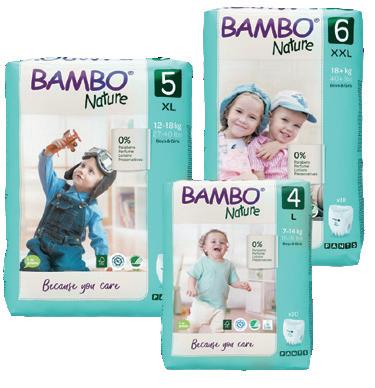
Bambo Nature Pants
Bambo Nature Pants
Bambo Nature Pants
Code Product Size (kg) Size Units per pack / ctn ABE1000019257 4, Pants 7-14 kg L 20/100 ABE1000019258 5, Pants 12-18 kg XL 19/95 ABE1000019259 6, Pants 18+ kg XXL 18/90 Code Product Size (kg) Size Units per pack / ctn ABE1000019251 1, Nappy 2-4 kg XS 22/132 ABE1000019252 2, Nappy 3-6 kg S 30/180 ABE1000019253 3, Nappy 4-8 kg M 28/168 ABE1000019254 4, Nappy 7-14 kg L 24/144 ABE1000019255 5, Nappy 12-18 kg XL 22/132 ABE1000019256 6, Nappy 16+ kg XXL 20/120
Incredibly Soft Ultra Flexible Leak Protectors Breathable Wetness Indicator Ultra Absorb Channels Code Product Size (kg) Size Units per pack / ctn ABE1000019257 4, Pants 7-14 kg L 20/100 ABE1000019258 5, Pants 12-18 kg XL 19/95 ABE1000019259 6, Pants 18+ kg XXL 18/90 Code Product Size (kg) Size Units per pack / ctn ABE1000019251 1, Nappy 2-4 kg XS 22/132 ABE1000019252 2, Nappy 3-6 kg S 30/180 ABE1000019253 3, Nappy 4-8 kg M 28/168 ABE1000019254 4, Nappy 7-14 kg L 24/144 ABE1000019255 5, Nappy 12-18 kg XL 22/132 ABE1000019256 6, Nappy 16+ kg XXL 20/120
Incredibly Soft Ultra Flexible Leak Protectors Breathable Wetness Indicator Ultra Absorb Channels Code Product Size (kg) Size Units per pack / ctn ABE1000019257 4, Pants 7-14 kg L 20/100 ABE1000019258 5, Pants 12-18 kg XL 19/95 ABE1000019259 6, Pants 18+ kg XXL 18/90 Code Product Size (kg) Size Units per pack / ctn ABE1000019251 1, Nappy 2-4 kg XS 22/132 ABE1000019252 2, Nappy 3-6 kg S 30/180 ABE1000019253 3, Nappy 4-8 kg M 28/168 ABE1000019254 4, Nappy 7-14 kg L 24/144 ABE1000019255 5, Nappy 12-18 kg XL 22/132 ABE1000019256 6, Nappy 16+ kg XXL 20/120
Incredibly Soft Ultra Flexible Leak Protectors Breathable Wetness Indicator Ultra Absorb Channels
Covering
Banana, Strawberry, Vanilla & Chocolate
Contains
• Multi-purpose wipes (75% alc)
• 5x Protective Face Masks
• Hand Sanitiser Gel
Contains







• Multi-purpose wipes (75% alc)
• Sanitising Wipes
Delicious
Protective Face Masks
•
• Hand and Surface Sanitiser
• Multi-purpose wipes (75% alc)
Diced Fruit in Easy-Open Packaging
• Hand Sanitiser Gel
• 5x Protective Face Masks
• Hand Cream
Diced Fruit in Easy-Open Packaging


• Hand Sanitiser Gel
• Sanitising Wipes
• Sanitising Wipes

• Hand and Surface Sanitiser
No artificial colours, flavours, or preservatives
• Hand Cream
No artificial colours, flavours, or preservatives


• Hand and Surface Sanitiser
• Hand Cream
The Bunzl Personal Hygiene Kit is the ideal solution for all your personal sanitiser needs.
1 serve of fruit as per Healthcare guidelines

For more information on how to order SPC ProVital online, contact our team at sales@atlasmcneil.com.au
For more information on how to order SPC ProVital online, contact our team at sales@atlasmcneil.com.au




The Bunzl Personal Hygiene Kit is the ideal solution for all your personal sanitiser needs.
Abri-Flex Junior is a disposable pull-up style continence aid that is discreet, comfortable and can be worn just like normal underwear. Designed specifically to fit teenagers and children aged between 5-15 years.
Abri-Flex Junior is a disposable pull-up style continence aid that is discreet, comfortable and can be worn just like normal underwear. Designed specifically to fit teenagers and children aged between 5-15 years.
Abri-Flex Junior is a disposable pull-up style continence aid that is discreet, comfortable and can be worn just like normal underwear. Designed specifically to fit teenagers and children aged between 5-15 years.



Abri-Form Junior is a disposable continence pad specifically designed to fit teenagers and children aged between 5-15 years. Winged for comfort and security, absorbent and fully breathable.
Abri-Form Junior is a disposable continence pad specifically designed to fit teenagers and children aged between 5-15 years. Winged for comfort and security, absorbent and fully breathable.
Abri-Form Junior is a disposable continence pad specifically designed to fit teenagers and children aged between 5-15 years. Winged for comfort and security, absorbent and fully breathable.




MKT-617 Call: 1800 888 541 Email: sales@atlasmcneil.com.au Web: www.amhcommunity.com.au
1800 888 541 www.vichealth.com.au AUSTRALIA WIDE DELIVERY FREE DELIVERY ON WEB ORDERS OVER $100 HOME CARE PACKAGE COMMUNITY SUPPLIER NATIONAL REGISTERED SUPPLIER
us for a free sample
HYGIENE KIT
Contact
PERSONAL
$27.44
Call: 1800 888 541 Email: sales@atlasmcneil.com.au Web: www.amhcommunity.com.au
AUSTRALIA WIDE DELIVERY FREE DELIVERY ON WEB ORDERS OVER $100 HOME CARE PACKAGE COMMUNITY SUPPLIER
us for a free
PERSONAL HYGIENE KIT $27.44
Contact
sample
MKT-617 Call: 1800 888 541 Email: sales@atlasmcneil.com.au Web: www.amhcommunity.com.au
1800 888 541 AUSTRALIA WIDE DELIVERY FREE DELIVERY ON WEB ORDERS OVER $100 HOME CARE PACKAGE COMMUNITY SUPPLIER NATIONAL REGISTERED SUPPLIER Contact us for a free sample PERSONAL HYGIENE KIT
The Bunzl Personal Hygiene Kit is the ideal solution for all your personal sanitiser needs. FREE SAMPLE
$27.44
sales@atlasmcneil.com.au Contains
5x
the ABC’s for optimal nutrition in paediatrics
*Frebini® is a food for special medical purposes and is intended for the nutritional management of malnutrition and therefore must be used under medical supervision. Click Here
Australian Grown
1.5kcal/mL Energy DRINK in 4 Delicious Flavours
Delicious
1 serve of fruit as per Healthcare guidelines Australian Grown
PACKING LIST
Have a saved list on your phone of all the things you and your child will need… it helps when you’re stressed or in a rush.
• Phone chargers
• Warm jumper
• Clothing with buttons
• Medication
• Shoes to shower in
• Snacks
• Magazine or book
• Favourite toys
• Kids’ books
• 2 Minute Noodles and Cup A Soups
• A LARGE coffee travel cup
• Coffee
• iPads for everyone
• Noise-cancelling headphones
• List of medications
HOSPITAL TIPS AND HACKS
What to pack, tricks to distract your anxious child, and how to get cheap coffee! Here’s some great advice from our Source Mama community for the next time you have a hospital visit with your child.

TIP “We always print out favourite photos and inspiring quotes and stick them up next to our son’s bed. Makes it feel more like home.”
TIP “A single mattress topper to go over the hospital parent bed, plus your own pillow, blanket and/or doona.”
TIP “A ‘Friend in Me’ virtual birthday party.”
TIP “Take more of your own medication and clothes than you expect you'll need, in case of an extended admission.”
TIP “If tube fed, bring at least one feed’s worth (and extension, giving set), for while they sort out feeds.”
TIP “A printed out brief medical history to hand to every doctor that asks the same questions!”
FROM MAMAS WHO KNOW 18 SOURCEKIDS.COM.AU
TIP “Time to process all you and your child go through, as this isn’t always available during the stay or even when you get home. If possible, get a support worker or trusted family member to come during the days/weeks after the procedure, so you can have a sleep and process some of the emotions (it helps me do this looking back over photos/notes taken at the time).”
TIP “Find out what opening hours are for kids’ services, meals and cafeteria.”
TIP “Be prepared to advocate for your child if things don't go to plan.”
TIP “Hairbrush and toiletries for yourself — I always forget about that stuff!”

TIP “The Children’s Hospital in Melbourne has a family hub. Ask about patient liaison officers - you can speak with them when you feel like others are not listening.”
TIP “Play therapists can be a good support when you are in for long stays.”
“Playdoh, my kid loves this when he is stuck in a hospital bed.”

TIP “Ask about discounted parking as a holder of a carer allowance or payment.”
TIP “Try and organise someone that can do some laundry for you if in for a long stay. Most rooms don’t have a lot of space, so having a large case of clothes is not possible and clean clothes are heavensent.”
TIP “Comfy clothes - quiet shoes and slippers.”
TIP “We always took our Nespresso machine to save money on coffees – life saver!”
TIP “I try to have a muscle rub on me because sometimes the emergency events would spasm my back and I needed something to relax.”
TIP “Sleepy bedtime spray (lavender and camomile) can help settle worries and nerves.”
tip tip
TIP “If your child is having surgery and has any concerns or fears, contact your anaesthetist prior and ask if they can meet your child before the theatre. If your child is VERY anxious, they can look after them before they get close to theatre, so they don’t remember anything.”
TIP “If your child is young and they are ‘Nil by Mouth’ until surgery, ask if you can be first on the list or as early as possible. Then ask them to check what the very last moment the child can drink water is — drinking water helps with hydrating the veins for injections, taking bloods etc.”
TIP “For kids with hard-to-find veins, there's a special ultrasound machine they can use to find the veins (you need to request). Warm blankets help as the aircon can make it hard to find veins.”
TIP “School can prepare activities to continue learning in the post-op recovery period, depending how long they are off for.”
TIP “Keep an eye on pain management. If it’s a concern, depending on the procedure, talk to other parents that have gone through it before. Especially for our non-verbal kids, be prepared to advocate — it can make a difference in recovery. You know your child best. Some hospitals have specialists in pain management, but you need to raise it as a concern.”
TIP “Download Uber Eats.”
TIP “A laminated social story of the procedure, or op, they are having. My son’s OT made him three including one for going on a plane, one for the pre-op procedures and one for the heart op, with photos of his and my face in them.”
“If you have private health insurance, call your insurer prior to booking in to the hospital and ask them what EXACTLY they will cover for the surgeon, the hospital, your anaesthetist and any aftercare professionals.”
“Bring an eye mask to wear at night as it can sometimes be hard for little people to sleep if there is lots of light.”
tip
ISSUE 34 | AUTUMN 2023 19 YOUR TIPS
Skye for “Going to a new school and being brave”.
Celebrating our SOURCE KIDS
Overcoming the odds, never giving up, trying new things… Our Source Kids continue to delight us proud parents. We have been thrilled to celebrate their achievements through the Source Awards.
Noah for “Doing well at long jump” and Eli for “Throwing a vortex 23 metres!”
Miller has just turned three and has an undiagnosed genetic condition which causes GDD, hypotonia and hearing loss. His mum Natasha writes: “Last night out of nowhere, he took a few steps by himself! We’re so proud of him and what he’s achieved and wanted to acknowledge this milestone with a #sourceaward.”

Darcy, whose mum, Julie writes: “He received his award for overcoming some huge fears he had during the year. He now uses escalators and hand dryers in public toilets. He’s also started to try many new things including rides at Luna Park.”
If your child or young adult has achieved something you’d like us to honour, please download a certificate, snap a pic of your child proudly displaying it, then send it back to us, and we’ll do the rest. Head here for more info sourcekids.com.au/source-awards we will be doing another round mid-year.








sourcekids.com.au/source-awards

Aria, who is nine-yearsold "has been working on fine motor skills for a long time now, including independently feeding herself! Lots of sensory fun along the way, and with perseverance she is getting there in great strides".

SCAN TO GET MORE INFOMATION
Erin for “Having a positive outlook for a new diagnosis. Taking control of my independence”.
20 SOURCEKIDS.COM.AU
William for “Playing games”.
SOURCE AWARDS

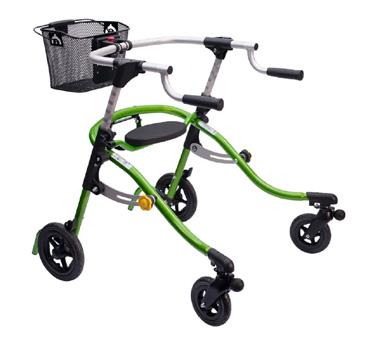




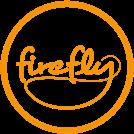




Μ Μ Μ Μ Μ

NDIS plan management with exclusive benefits. Visit leapin.com.au Call us on 1300 05 78 78 Sign up for Leap in! plan management and access our exclusive Member Benefits Club. The discounts and offers available in the L! Club can save you money on everyday items – groceries, homewares, electronics, disability-related products and services and so much more. We put Members first. We help you navigate the NDIS with confidence, armed with the knowledge you need to get the most out of your child’s plan. And, we take care of NDIS admin and paying invoices to give you more time to focus on the things that matter to you and your family. Talk with us today about how we can make a difference for you.
Ask a PLAN MANAGER!
If you’re concerned about the development of a child under seven, help is available. Our friends at Australia’s leading plan manager Leap in! answer some common questions about how early connections work and the types of supports available for children and families.
What are early connections?
Early connections are designed to support children younger than seven with disability or developmental delays, as well as their families and carers, as part of Australia’s new early childhood approach.
Early intervention helps ensure children get the proper support to achieve the best possible outcomes throughout life.
This best practice approach is designed to connect children and their families with early supports and information to develop capacity and improve the child’s opportunities.
Are early connections the same as the NDIS?
The NDIS funds early connections but children don’t need to be on the NDIS to access these supports.
Early connections are available more broadly than the NDIS and don’t take into account citizenship or visa status.
I’m concerned about my child’s development, but we haven’t received a diagnosis yet. Are we eligible for early connections?
Children under six with developmental concerns do not need a formal diagnosis to be eligible for early connections. Children under seven with global developmental delay or disability are also eligible.
Can you explain what is meant by “developmental concerns”?
In simple terms, it refers to any uncertainty or concern you may have about your child’s development. You may have noticed your child struggling to complete activities compared with other children of the same age, or you may have observed differences in how they play, move, take care of themselves, socialise or communicate compared with other children their age.
How can my family access early connections?
If you have concerns about your child’s development, speak to a health or education professional such as your GP, occupational therapist, child health care nurse, or early childhood educator.
They can connect you with an early childhood partner (ECP), an organisation with experience and clinical expertise in working with young children with developmental concerns or disability and their families. You can also contact an ECP yourself. No referral or diagnosis is needed.
I’m not sure where to start when it comes to assessments and therapy. Can early connections help?
The role of an early childhood partner (ECP) is to provide your child and family with tailored assistance and support.
An ECP uses observation in familiar settings to understand how the child plays, communicates and helps take care of themselves. They may also use assessment tools to learn more about the child’s development.
They will help set priorities and goals for the child alongside the family, and then connect you with services, information, other families, and any other resources you need.
What supports and services are available through early connections? Is there a fee?
Early connections can connect you with early childhood services, paediatricians, health services, family support services, and support networks in your community.
ECP teams often include occupational therapists, psychologists, physiotherapists, speech therapists and other allied health professionals, making it much easier to connect with professionals who can help.
With years of frontline experience at Leap in! HQ, Tabitha is the perfect person to explain how to get started and the relationship between early connections and

The early childhood approach and working with an ECP is free. Charges may apply for assessments, programs or other related consultations with other healthcare professionals.
How can I get help if we decide to apply for the NDIS?
An ECP can help you decide whether to apply for the NDIS and support you through the access request process.
Leap in! has also released a new eBook, Accessing the NDIS: A guide to eligibility and how to apply. If you’re unsure where to start, this eBook is for you.
If you’re a parent of a child with disability trying to navigate the NDIS, Leap in! is here to help. Leap in! can answer your questions and provide advice for getting the most from your child’s NDIS Plan.
To read a copy of the eBook, head to leapin. com.au/wp-content/uploads/Leap-in-eBookAccessing-the-NDIS.pdf
Call Leap in! on 1300 05 78 78 or email crew@leapin.com.au to speak with a team member experienced in the NDIS and early childhood approach.
DO YOU HAVE A QUESTION YOU’D LIKE US TO ANSWER IN THE NEXT EDITION OF SOURCE KIDS? WE’D LOVE TO HEAR FROM YOU. SEND YOUR QUESTION TO MYSTORY@LEAPIN.COM.AU
ISSUE 34 AUTUMN 2023 23 IN ASSOCIATION WITH
Q Q Q Q Q Q Q Q
the NDIS.
A lifeline to BETTER HEALTH

Eating and drinking is a part of everyday life. It is a source of socialisation, celebration, and joy. However, for tens of thousands of Australians, eating food can be a negative experience, either because they physically cannot eat, or the food they do eat is not enough to sustain them.
One mechanism to support those affected is called tube feeding, or enteral nutrition, which can provide the essential nutrition they need if they are unable to eat or drink, or unable to eat or drink enough.
Feeding tubes can be temporary or permanent and are a way food in liquid form, formula, fluids and medicine can get into the body.
The two most common types of feeding tubes are a nasogastric tube (NG-tube),
which is a tube that is inserted through the nose and runs down to the stomach, and a gastrostomy tube (G-tube) which is inserted into the stomach through a small opening made in the abdominal wall. G-tube types include a PEG (percutaneous endoscopic gastrostomy) and a low-profile device/ button (balloon and non-balloon).
Other types of feeding tubes include nasojejunal tube (NJ-tube), jejunostomy tube/button (J-tube) and gastrojejunostomy tube/button (GJ-tube) and are named by their placement in the gastrointestinal tract.
There are many reasons why babies, children or adults may require tube feeding. This includes over 400 conditions, with some of the more common being paediatric feeding disorders, gastrointestinal diseases, eating disorders and cancer.
Those living with a feeding tube, and their carers, openly express gratitude for how it sustains life.
However, many with feeding tubes report that they often face a lack of support and reduced quality of life, experience pain, social stigma, associated anxiety, and poor understanding from healthcare professionals and the community.
Some of the issues faced include limited access to education and training on tube feeding for family members, childcare and schools, portability of feeds, access to medical services in regional and rural areas and lack of tube weaning programs. There are also inequities in financial assistance being provided for tube feeding supplies and respite for carers.
Founded in 2009, ausEE Inc. is a national health promotion charity whose mission is to improve the lives of those affected by eosinophilic diseases through

People can be tube fed for a variety of medical reasons, but they commonly face pain and reduced quality of life, in addition to social stigma and associated anxiety. There is much to be done to change their experience, says Sarah Gray.
24 SOURCEKIDS.COM.AU
Those living with a feeding tube, and their carers, openly express gratitude for how it sustains life.
providing support, evidence-based information, resources, advocacy, and campaigning to raise awareness and funds for further research in Australia. Eosinophilic gastrointestinal diseases are just one out of hundreds of conditions, that may require tube feeding to ensure nutritional needs are met. Since 2015, ausEE Inc. has hosted Australasia’s Feeding Tube Awareness Week (FTAW) each year, to bring everyone together who has a feeding tube. Last month, over 90 landmarks around Australasia were illuminated purple and blue for the first time, to raise awareness for tube feeding. The tubie community united by sharing their lived experiences, helping to inform the wider community on the day-to-day impact of tube feeding.
Find out more about FTAW at feedingtubeaware.com.au. The platform provides links to information, helpful products, stories, virtual education videos, practical resources and support networks for Australasians living with feeding tubes and fosters partnerships for resource sharing with other disability and advocacy organisations.
Sarah Gray OAM is CEO and founder of ausEE Inc, a charity dedicated to improving lives affected by an eosinophilic disease.
Just ask….
Tayarra has one simple request of people… “just ask”.
If you want to know what that tube is, or how it works, or why she has it... just ask.
She’d rather that, than people make assumptions, or worse, treat her like she’s invisible.
She’s always happy to answer questions and raise awareness about why someone can have a feeding tube and what life is like with it.
Tayarra started her feeding tube journey when she was 24. She lived with severe gastroparesis, neuromyelitis optica and multiple sclerosis. Specialists exhausted every option before eventually putting in her feeding tube.
Tayarra wants people to know that doctors don’t put in feeding tubes just for the fun of it. If she didn’t have her tube, she would be in intensive care with a much more severe form of refeeding syndrome.


She is thankful for the tube saving her life, but often gets frustrated with the lack of understanding from others. People stare, make remarks, some point, whilst others ignore. It’s prompted her to become an advocate for people with feeding
tubes. Recalling the moment her doctor said she needed a feeding tube, Tayarra admits it was a lot to process. But she worked through it and has this advice for those facing the prospect of a feeding tube.
“It will change your life, but for the better,” she says.
“There will be a lot of adjustments, but you’ll get the hang of it.
“A feeding tube can be uncomfortable and even painful sometimes. You’ll need to adjust your sleeping position and make extra time to clean and maintain your tube and to handle any complications.
“When you can’t eat the same way as everyone else, it can change your social life and make you feel left out. You may feel selfconscious about your tube and it’s okay to feel like that.’ But she also has a superpower too!
One advantage of having a feeding tube is that she can eat while she sleeps. Now that’s multitasking!
You can follow Tayarra’s story on Facebook and on Instagram @tayarrasmith
With Rebekah Devlin
“It will change your life, but for the better.”
FOR 27-YEAR-OLD TAYARRA, IT’S THE STRANGE LOOKS, THE POINTING AND HURTFUL REMARKS, OR THE BLATANT WAY SHE’S IGNORED, THAT HURTS THE MOST.
ISSUE 34 | AUTUMN 2023 25 TUBE FEEDING
Ollie celebrating Feeding Tube Awareness Week





A bond THAT BINDS
It’s an unlikely friendship, but for 17-year-old Hunter and two-year-old Rory, the connection was instant.
Rory’s older sister, Jazmyn, attended school with Hunter and when their paths crossed, the shared experience was the catalyst for a sweet and devoted friendship.
Rory, who is partial to pulling out his tube multiple times a day, even cheekily tried to show Hunter how he could pull his tube out for him!

“Rory just adores Hunter,” says mum Karla.
“It's just a beautiful friendship and I think it’s reciprocal for Hunter too. Even though Rory’s so much younger than him, to have someone who has the tube as well, there’s that mutual understanding, even though they might express it differently.
“And Hunter is so devoted to him, he is always trying to show him things and take care of him. He even wants to help with changing nappies, which most people never want to do.”
The pair live some 125km apart in regional South Australia and regional Victoria, but they try to catch up as often as possible.
“We live in a town of just 200 people, so for Rory, apart from when he has to go into hospital, he’s never really been around another child who has an NG
tube, and especially during COVID, there wasn’t the opportunity to connect with other kids in the same situation. So this friendship with Hunter has just been so precious.”
Hunter has multiple disabilities; two chromosomal abnormalities, Ehlers-Danlos syndrome, eosinophilic oesophagitis (EoE), autism, epilepsy and developmental delay. Despite the efforts of dietitians and specialists, food gave Hunter constant pain. As a result, he lost more than 25kgs in the last few years. At 15, he experienced brain trauma from a seizure lasting 42 minutes. Since then, he has barely touched food and has lost some sense of taste and smell. This led to Hunter using a nasogastric tube to help him receive nutrition and gain weight. Whilst having the PEG has not enticed Hunter to eat, his mum Amanda is grateful for it, as it gives him the nutrition he needs.
Rory has had a nasogastric tube since birth and is on the waiting list for a gastrostomy/jejunostomy. He has several disabilities including spastic quadriplegic cerebral palsy, refractory epilepsy, global developmental delay, cortical vision impairment, hearing loss, gastroparesis and severe brain injury. He cannot safely swallow due to his brain injury. Coupled with his gastroparesis diagnosis, Rory has significant difficulties in maintaining his nutrition status and has struggled since birth to grow at a healthy rate. Rory is frequently unwell. Each time, he has a regression with his nutritional status resulting in weight loss, increased vomiting and needing to reduce the rate of his feeds, which are delivered by a feeding pump. This means Rory must have prescribed multivitamin powdered formula to ensure he is meeting his daily nutritional needs and doesn’t become malnourished. It’s difficult for Rory to tolerate his feeds, even through a tube, as he also has significant issues with internal and external muscle spasms and excess secretions due to his cerebral palsy. He is frequently in pain during feeds and spends over 10 hours a day attached to his feeding pump to ensure he receives sufficient nutrition at a slower rate to minimise pain. Hunter is one of the absolute highlights of Rory’s day and a welcome distraction from the pain.
 With Rebekah Devlin
With Rebekah Devlin
28 SOURCEKIDS.COM.AU TUBE FEEDING



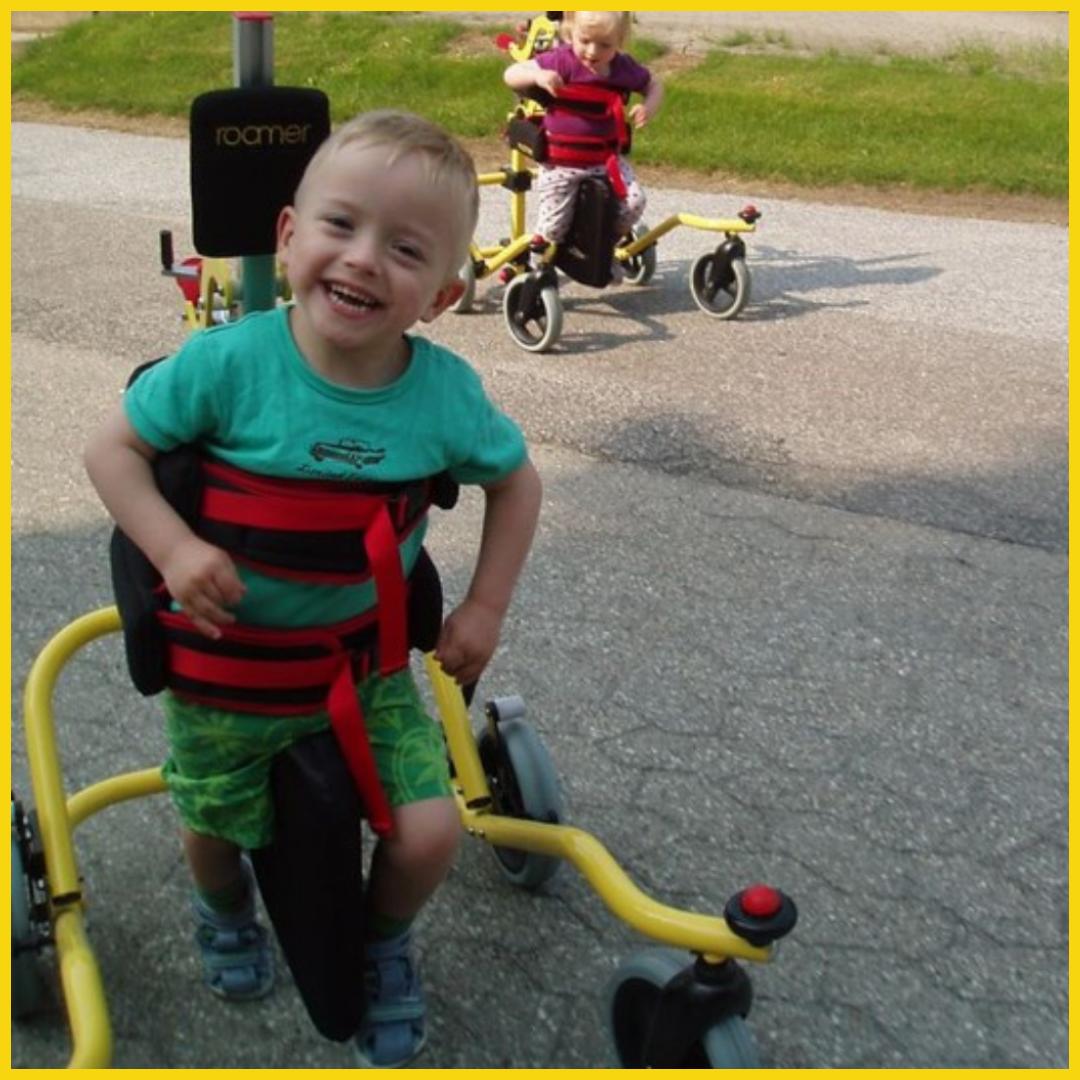



L E T U S H E L P Y O U A C H I E V E Y O U R G O A L S www.dejay.com.au therapy@dejay.com.au 02 9838 8869 H e l p i n g f a m i l i e s f o r o v e r 3 5 Y e a r s
Tube FEEDING
Practical, portable, discreet,
REUSABLE POUCHES
Looking for an easy and convenient way to feed on the go? The Tubie Fun Reusable Pouches can hold 500ml of liquid and connect to Nutricia Flocare products. They can also be used to store formula, milk, blended food, condiments, soups, custards, yoghurts and toiletries. The options are endless. RRP $2.50 tubiefun.com.au

picks.
BUTTON PADS

G-tube pads (also known as button pads, or button pad covers) are designed to take the place of hospital gauze, and are a fun and stylish way to help with tube feeding. They are used to absorb any leakage from the site, keeping it clean and dry. We love the options from Tubie Fun, which have bright colours and a range of themes including LEGO, superheroes, and princesses. From RRP $9.50 tubiefun.com.au
ADULT BACKPACK
The FreeGo adult pump backpack allows for easy portability of the FreeGo pump system. Designed for adults, the backpack will hold the 500ml RTH containers and 200ml bottles. It will also hold the 1500ml and 1000ml RTH. Plus, black goes with everything! RRP $160 brightsky.com.au

THE ABILITIES IN ME
If your child has just started their tube feeding journey, this is a great book to include in your resources to help understand the concept in a positive and empowered way. Aimed at children between three and eight, it tells the story of a young girl who is tube fed. $29.95 anjelstore.com.au

KIDS’ TUBE FEEDING BACKPACKS

These insulated feed bags are great for kids who need freedom to move. The backpacks feature a bottom opening to allow for the drip chamber and tubing to be easily accessible for connecting. It comes with an adjustable shoulder strap and fits the Nutricia pump with a 500ml Flocare bottle or 500ml Nutrini bag, or the 500ml Nutricia Optri bottles. RRP $65 tubiefun.com.au
TUMMY WONSIE
The tummy Wonsie is perfect for tube feeding via a PEG or G-tube. Made from soft cotton with a discreet centre front opening with a snap closure, it also helps to deter hands from touching the tummy area, keeping the area clean. They also ensure backs and tummies stay warm during the cooler months. RRP $34.95 wonsie.com.au

COMPLILED BY KELLY WILTON
and fabulous — there is a growing range of products to support tube feeding. These are our
30 SOURCEKIDS.COM.AU PRODUCTS
A tube feeding picture book















ISSUE 34 | AUTUMN 2023 31 ActivePlay See our range of products that help with Balance Motor Skills Strength LEARN & GROW And more! hartsport.com.au It’stimeto PLAY! It's easy to shop with HART! Ipai-LGT Carrot 3000 (Pictured) Kidsflex Hero-NXT Starlight-NXT Where will the road take you? Experts in Special Purpose Car Seats Scan QR code to find out more










REHAB EQUIPMENT, TAILORED FOR YOUR LIFE. Night time positioning Early intervention Specialised Indoor seating Standing aids Car seating Walking aids Manual wheelchairs Powerchairs Trikes & recreation Helping you Live Life, wherever your journey leads Ph: 03 5441 8966 | E: support@activerehab.net.au | www.activerehab.net.au We are Victoria’s leading AT equipment provider, working to help you Live Life!
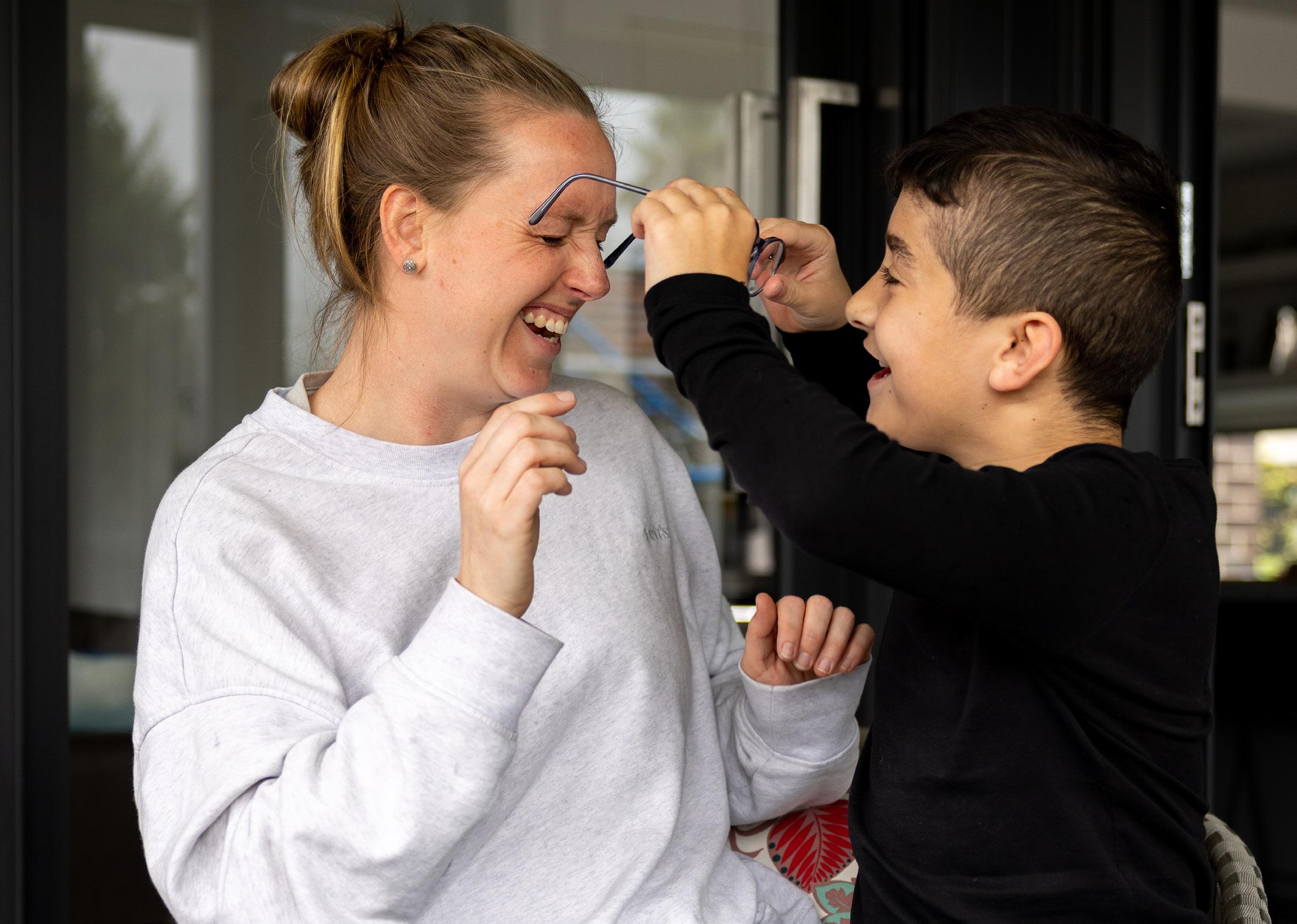
people you know and trust as your Disability Support Workers. 1300 729 839 CarerSolutions.com.au
in control of who you employ and when Determine the pay rates with your Support Workers – agree the best rates for you and them
expert
payroll obligations and insurance
find out more, give us a call. Anouk & Archer
Be
Our
team manage your
We also offer our Personalised Plan Management service nationally. To
SHOULD YOU CONSIDER IT?
Chances are genetic testing has been mentioned by a doctor, a support group or a random on Facebook. So, what are the benefits? Genetic counsellor Rachel Pope-Couston explains.

Genetic Testing: when
whatWhat does genetic (or genomic) testing look for?
Genetic testing is trying to find genetic changes in a person that explain their condition or symptoms. Some genetic or genomic tests will be looking for a single letter in a gene, which stops the gene from working properly, while others will be looking for missing or extra chromosome information, like a duplication or deletion.
What are some of the results you can receive? Generally, there are three types of results: diagnostic, uninformative, and uncertain. When a pathogenic variant is found, then the test is diagnostic. This means that the genetic explanation for the condition has been found. Uninformative results are where no genetic variants have been found that could explain the condition or symptoms. Uncertain is where a genetic variant has been found, but it is not yet clear whether it is the explanation for the condition.
When would genetic testing be offered to someone with a suspected genetic condition? This will depend on a range of different things. For example, some people are born with symptoms that suggest a genetic condition could be the explanation for their experience, while other people won’t develop symptoms until adulthood. For some people, a genetic test will be performed routinely by a specialist involved in their care, and then they will be referred to a genetic specialist. For others, they may be referred straight to a genetics service, to help decide what type of genetic testing will be most helpful. Getting access to a genetic test, genetic service, or any other relevant speciality can take a long time. The term ‘diagnostic odyssey’ is often used to refer to the experience of searching for a diagnosis for unexplained symptoms. Unfortunately, there are many people and families that still experience a very long, drawn out journey to reach a diagnosis, even once they access a genetic service. Some people will undergo all available tests, including genetic/genomic testing, and still not have a certain diagnosis.
It can be frustrating not to know which tests should be done and when, who should have them, and why they might be helpful. It’s important to understand, there is no clear answer to many of these questions and each family’s journey with genetic testing will be different. You can seek a referral to your local genetics service and speak to a genetic health professional. Genetic counsellors are skilled in helping people work through complex information to make decisions that are right for them and their family. They can also provide support in understanding genetic test results and genetic conditions once they are diagnosed.
34 SOURCEKIDS.COM.AU
whyWhy might you want to do the testing? A genetic test may be able to provide a diagnosis for what is going on. Having a name for the condition (or identifying the genes responsible for a very rare condition) makes it easier to find information and learn more about what the future may hold. As a parent, the information may be helpful in planning further children, or if the diagnosis is yours, it can help you plan for a family in the future. A diagnosis or even a 'nondiagnosis’ also facilitates a connection with other families and individuals who may have shared a similar journey.
Why might you not want to do the testing? Sometimes, knowing more about what the future may hold can be scary, especially if the condition is likely to get worse. Sometimes a genetic test will not add any information that’s needed right then (for example, if someone already has a clinical diagnosis). Some people may want to investigate the implications for things like life insurance before they get testing. A genetic counsellor can also help you consider these issues. You do not have to decide to have testing to speak to a genetic counsellor.
Why isn’t a genetic diagnosis always possible?
The genetics community has made huge progress in what we know about human genetics, but we don’t know everything at present. Sometimes, the technology doesn’t work well enough yet to find a genetic cause that is there. Or, sometimes our understanding may not be good enough to interpret every genetic change (like variants of uncertain clinical significance mentioned above). Sometimes, the genetic cause may not be a single genetic change, but a lot of small contributing factors.

ISSUE 34 AUTUMN 2023 35 GENETICS
How is the sample collected?
Most genetic and genomic testing is done by collecting a small amount of blood. However, many tests can now be done using a buccal swab which collects the skin cells from the inside of the cheeks, or by collecting a sample of saliva in a ‘spit tube’.
How is the testing done?
In Australia, clinical genetic testing is performed in a NATA-accredited laboratory which is experienced in providing the testing. Some tests look at a single gene, some, many genes at once (a panel), others look at thousands of genes (exomes), or every gene in the body (genome).
How will I get the results?
These should be provided to you by a professional who understands the results, like a paediatrician or a genetic health professional. Before testing is done, you should be involved in planning when and how you will receive the results.
SOME USEFUL TERMS TO KNOW
Who will be offered genetic testing?
In the public system there are clear guidelines on who will be offered a genetic test. Genetic testing usually starts with the person who has the most symptoms. If the person is a child, sometimes one or both parents will also be asked to undergo testing at the same time, or after the result for the first person is available. If a clear genetic diagnosis is made, sometimes others in the wider family will then be able to access genetic testing. There are a growing number of ways to access genetic testing outside of a public clinic, and in the next edition of Source Kids magazine, we’ll talk more about the different options and their pros and cons.


Rachel Pope-Couston, MGC, FHGSA is a registered and certified genetic counsellor and is the current president of The Genetic Support Network of Victoria (The GSNV) Committee of Management.
SOURCE: An image of a section of DNA which makes up a gene. The blue lines represent each individual letter of the genetic code in a gene. Genetic Health Alliance UK (2021).
A gene is a series of specific letters in the genetic code. It spells out the instructions for how each tiny part of a person develops and functions. Generally, we have two copies of each gene, one from each parent.

how who
36 SOURCEKIDS.COM.AU GENETICS
SOURCE: Human karyotype (picture of the chromosomes which is made by arranging the pictures of individual chromosomes in a person's cells) for someone with Down syndrome. National Down Syndrome Congress (2023).
CHROMOSOMES
If you think of each gene as the instructional manual for building each part of the body, then chromosomes are the bookshelves that provide the structure for storing the instructions. People generally have two copies of each of their chromosomes, one from each parent, and they are numbered in pairs from one to 22, with one set of sex chromosomes. Human sex chromosomes have the most variety of all the chromosomes. Most people either have an X and Y (usually male) or two X (usually female) chromosomes, but other variations exist, like XXY, which is often referred to as Klinefelter’s syndrome or people with one copy of the X chromosome, which is known as Turner’s syndrome. Down syndrome is also a chromosome condition. People with Down syndrome have an extra chromosome, number 21, which is why another name for the condition is Trisomy 21.

SUPPORT AND SELF-CARE
Searching for answers about what is affecting you or your loved one goes beyond the medical journey. It’s normal to feel a range of emotions, no matter what the outcome of the genetic testing, or even if no testing is done. There is no right or wrong way to navigate this experience – thoughts and feelings, change and adjustments, losses and gains, and the grieving process are unique to the individual. This is not a journey you need to travel alone, no matter how rare the condition. Groups like The GSNV can help. A not-for-profit organisation that serves all people with genetic, undiagnosed, and rare conditions, and those who support them, The GSNV can connect people with conditionspecific support groups or organisations like Syndromes Without a Name (SWAN) Australia.
SOURCE: Example of a deletion and a duplication compared to the average chromosome in the middle. AccuGenomics (2020)
DUPLICATION/DELETION
These are the terms used to describe a small extra piece (duplication) or missing piece (deletion) of a chromosome, which means there are also extra or missing copies of the genes, normally stored on that part of the chromosome. Collectively, duplications and deletions are called copy number variants (CNVs) because the number of copies of the gene/s involved will vary from the number expected (usually two). CNVs are often found when a child has a genetic test called a chromosomal microarray. An example of when this would happen, is a paediatrician organising a microarray when a child receives an autism diagnosis (based on their behaviour and developmental signs). Some CNVs don't cause any problems, some do (these are pathogenic CNVs, explained below) and for other CNVs, there is uncertainty around how they affect a person. The uncertain CNVs can be called ‘variants of unknown’ or ‘uncertain clinical significance’, and sometimes can be referred to as ‘susceptibility variants’. Being susceptible means being more vulnerable to something or an outcome being more likely because of the CNV, but it is not guaranteed.



PATHOGENIC VARIANT/ MUTATION
We all have variations (differences) from one another in our genes and most genetic variations do not cause problems, they just explain our different characteristics. For example, we all have genes for skin colour, but the instructions vary slightly from one person to the next, which is why humans have such a spectrum of possible skin colours. However, a pathogenic variant is a genetic change which causes a problem with how the gene works. For example, someone with a pathogenic variation in the gene for melanin (the pigment or colour creating component) in the skin will have a form of albinism, because their body cannot make melanin. People with albinism are healthy overall, but can have problems with their skin being easily damaged by the sun, or vision problems if the pigment in their eyes is affected. In the past, a genetic change was often referred to as a mutation. However, the word mutation has complex feelings attached to it for many people and is also not an accurate way of describing a genetic change, as not all mutations are pathogenic. For these reasons, the more up-to-date way to refer to a disease-causing genetic change, is ‘pathogenic variant’.
ISSUE 34 | AUTUMN 2023 37














38 SOURCEKIDS.COM.AU Easier Meal Times Sleep Better Hang Out on the Playground More Fun Ride to School Be More Comfortable at School Equipment Wish List! For Everyday Activities Hang Out with Family Watch Movies with Friends Go to the Park Download our new Easy Product Selection Guide Interactive PDF Clinical@sunrisemedical.com.au For more information:



















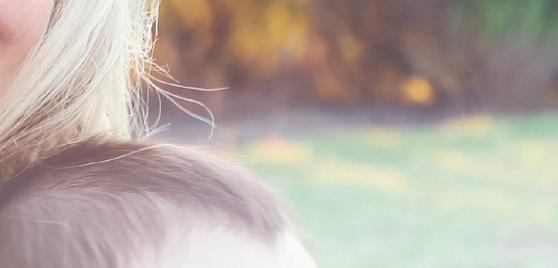














INCREASING MOBILITY AND COMFORT AMONGST PEG-FED CHILDREN To purchase our danumed range today, please contact amsl.com.au us at (02) 9882 3666 or at amsl@amsl.com.au Australasian Medical and Scientific ltd. 2 Mccabe Place, Chatswood, NSW 2097. ALWAYS READ THE LABEL AND FOLLOW DIRECTIONS FOR USE. Consult your healthcare professional to see which product is right for you. AMSL is a subsidiary of Dexcom. PR-100-642 February 2023 Check out our new gastrostomy button below Small, low-profile tube Easy to clean Discreet under clothing Latex free, PVC/BPA/DEHP free
Breaking down NDIS language barriers
For the first time, NDIS information booklets are accessible to the deaf and blind, with digital braille and Auslan versions now available.

A valuable resource for participants, their families and carers, as well as people wanting to apply for the NDIS, the booklets provide useful information about the process of creating and utilising an NDIS Plan.
The booklets have also been translated into five new languages and updated with more user-friendly content, helping to break down language barriers and increase accessibility.
They are now available in 17
languages, with Assyrian, Dari, Khmer, Korean and Turkish added to existing translations in Arabic, Chinese (Simplified), Chinese (Traditional), Filipino (Tagalog), French, Hindi, Greek, Italian, Macedonian, Samoan, Spanish and Vietnamese.
Booklet updates also include legislation changes, information on the ‘my NDIS app’, and more consistent and userfriendly content.
All translations including Auslan, can be downloaded from the ‘languages’ page, and digital braille booklets can be accessed from the ‘booklets and factsheets’ page at ndis.gov.au
WIN! WIN! WIN!
Go
TUBE FEEDING RESEARCH
Eliminating gaps in patient care is a key aim of a new research project into the health-related quality of life in people who utilise (or care for someone who utilises) home enteral nutrition and/or elemental formula in Australasia.
To date, there has been little Australian research in the patient population in this field, so volunteers are needed to contribute to the study.
A research academic from the University of Wollongong, and ausEE Inc. president, Dr Mercedez Hinchcliff is parent to a child who relied solely on elemental formula for nearly the first five years of his life.
It is this lived-experience that is driving her research, to help inform recommendations for tube feeding and elemental formula services across Australia.
If you’d like to participate by taking a 15-minute survey, please visit bit.ly/HENEFQoLSurvey
A ROOM FULL OF STARS
The rotating star projector magically takes you to the night sky. Use it as a projector to shine stars onto the walls and ceiling (or even better, a dark tent!). RRP $34.95 mydiffability.com.au

40 SOURCEKIDS.COM.AU NEWS IN BRIEF
MESSY PLAY LIGHTBOX
STRETCHY STRING

OCEAN WAVE PROJECTOR
A lovely sensory projector which creates a calming and fulfilling environment. It has seven colourful light modes, producing different effects and feelings. It contains a music function with four sounds to choose from (or mute, if you prefer!) RRP $34.95 mydiffability.com.au


CLOUD KINGDOMS
Look up into the clouds, what do you see…? Join three cousins as they are transported into the clouds for a thrilling adventure, discovering friendship, how to work together, and a new world! RRP $19.95 cloudkingdoms.au

Stretchy string fidget toys keep fingers and hands busy, whilst strengthening fine motor skills. Soft yet durable, they are perfect to stretch, fidget, pull, roll, squish and squash. RRP $19.50 mydiffability.com.au to sourcekids.com.au/win to enter, and for full terms and conditions.
Get lit! Enjoy messy, sensory play with this super cool light-up box. See what happens when you play on the surface with sand, coloured stones, cars, magnetic tiles, or any toys you wish — there is no limit to your imagination. RRP $49.95 mydiffability.com.au

Learn more about our hassle-free approach to plan management www.myplanmanager.com.au | 1800 861 272
for an
manager? My Plan Manager takes the stress out of the NDIS • Quick three-step joining process • Invoices paid within three working days • Personalised support and local knowledge • Client and provider technology to track plan spending
Looking
NDIS plan
Autism and
CO-OCCURRING CONDITIONS
any autistic people have other conditions that impact their life. This is called ‘comorbidity’. These comorbid or ‘co-occurring’ conditions may not appear until adolescence or adulthood. They may also come and go throughout a person’s life.
Co-occurring conditions can be related to genetics and heritability, medical, developmental and mental health comorbidities. These can include:
The types of co-occurring conditions, and the effects they have, vary from one person to the next. They can exacerbate the impact of autism and affect any therapies or interventions a person is receiving. Some can have quite serious implications, so it’s crucial they be identified as early as possible and treated separately.

“Co-occurring conditions can exacerbate traits associated with autism,” says Professor Amanda Richdale.
MWhile studies suggest having autism increases the likelihood of having a cooccurring condition, researchers still don’t know exactly why. There are likely to be factors relating to genetics, environment, and a combination of these two factors that increase risk. It is also likely that the symptoms related to many of these comorbidities overlap. More research needs to be done to fully understand the complex relationship between autism and other issues. ADHD INCLUDING INATTENTION AND OR HYPERACTIVITY

ANXIETY DISORDERS PSYCHOTIC DISORDERS EPILEPSY OR SEIZURE DISORDERS INTELLECTUAL DISABILITY DEPRESSION EATING DISORDERS GASTROINTESTINAL ISSUES LANGUAGE DELAY MANIA SLEEPING ISSUES LANGUAGE DELAY CHALLENGES WITH FINE AND GROSS MOTOR SKILLS OBSESSIVE COMPULSIVE DISORDER ATTENTION ISSUES CHALLENGES WITH FINE AND GROSS MOTOR SKILLS
Autistic people may also be diagnosed with another co-occurring condition. Knowing what these conditions are can help you navigate the different assessments and interventions required.
42 SOURCEKIDS.COM.AU
WHY CAN CO-OCCURRING CONDITIONS BE DIFFICULT TO IDENTIFY?
It can be difficult diagnosing both autism or a co-occurring condition because the traits of one can mask the other, or make them difficult to assess. It is also common that services that specialise in one domain (e.g. diagnosis of autism) may not specialise in other domains (sleep or mental health concerns) and this means that different comorbidities may be identified depending on the expertise of the assessing clinician.

For example, a non-speaking person may not be able to effectively communicate feelings of depression or anxiety, and pain from gastrointestinal issues may be misinterpreted as a sensory overload. It can sometimes be hard for specialists to determine the cause of a symptom, and if it is related to autism or a separate condition.
KEY TAKEAWAYS
Likewise, some traits that are similar to autistic ones can impede an accurate autism diagnosis. For example, a child may be diagnosed with a language delay when they are actually on the spectrum and quietly struggling with a raft of other autism-related issues.
ADHD traits can also look very similar to those of autism and mask the condition. This then delays when (or if) a child ultimately receives an autism diagnosis.
All of these factors make quantifying the prevalence of autism and co-occurring conditions difficult.
Expect that you may need to attend different assessment and intervention services to ensure comorbidity is addressed.
It is important that clinicians with different backgrounds of expertise communicate together when comorbidity is addressed.
GETTING THE RIGHT SUPPORTS FOR COOCCURRING CONDITIONS

It can be difficult to access the right interventions for people with co-occurring conditions. People often report having to visit many different specialists, as they need to have expertise in both autism and the comorbidity to be able to provide effective care. This is one of the reasons it is really important to get multidisciplinary care, so that people with different expertise can work together and solve complex needs together and provide effective care.
Reproduced with permission from Autism: What Next? autismwhatnext.com.au
“It’s crucial they be identified as early as possible and treated separately.”
Many autistic people have other conditions that impact their life. This is called ‘comorbidity’ or ‘co-occurring conditions’.
Diagnosing autism or a co-occurring condition is sometimes difficult.
Anywhere between 60-95% of autistic people are estimated to be living with other medical conditions or disorders.
ISSUE 34 AUTUMN 2023 43 IN PARTNERSHIP WITH
Perfect snacks for little ones

































































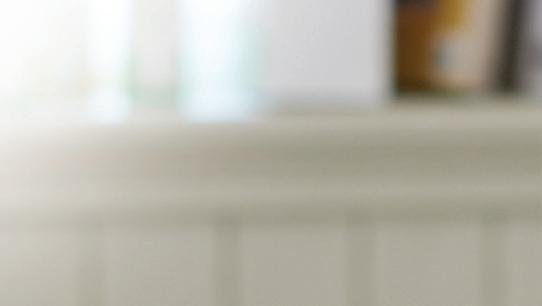
































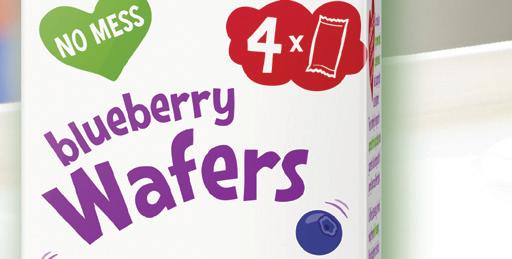
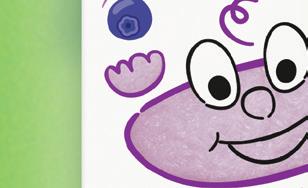









Our snacks keep tiny tummies topped up between meals as well as supporting little ones’ development such as practising their pincer grip.














There is something for everyone from 6 months old (perfect for weaning and teething) and we guarantee it will be bursting with lots of yummy flavours and different textures.





























out more at kiddylicious.com.au
Find
@kiddyliciousANZ
Assistive Technology Hire










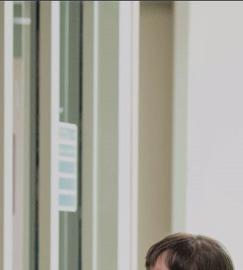





















































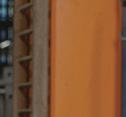



























Because sometimes you need support for a short time






Hire is a great option for short term needs, or where an NDIS Participant is waiting for funding to be approved. Hire is also beneficial when needs change.








Astris PME provides hire and rental options for scripted equipment. Our Hire service provides you with choice and flexibility when it comes to your care. It can help support you through the times of need as well as let you trial different solutions for your care.





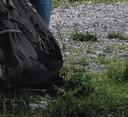









Our loan/hire fleet continues to grow with a large range of inventory held in our warehouses, including manual and power wheelchairs, strollers, walking & gait trainers, standing frames, indoor seating, hygiene equipment, beds, hoists & transfer devices, and exercise equipment.






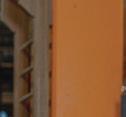
Scan the QR code or call our national support hotline on 1300 131 884 to learn more about AT Equipment Hire.









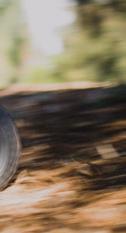
1300-131-884 sales@astris-pme.com.au • astris-pme.com.au Sydney • Newcastle • Young • Canberra • Melbourne • Brisbane
We stand out from the rest with our awards:
PMA Awarded by Australian Enterprise Awards “Best NDIS Plan Management Service Provider”
Oceania 2023
PMA Awarded by Disability Update
“The most Outstanding Intermediary in the Disability Sector” Australasia 2019
GET THE NDIS SUPPORT YOU DESERVE
Are you an NDIS participant who is looking for Plan Management?
At Plan Manage Assist (PMA) we pride ourselves as being different from other providers. We are passionate, with in depth experience from both sides as our directors are carers for family members that have disabilities. We provide a very personal and professional service that aligns with our passion and commitment to disability to ensure maximum outcomes for participants.


Our first-hand experience of the NDIS process provides you with the understanding of the benefits within the NDIS. Our plan managers are experts and will guide you in all aspects of your NDIS plan, assist you in managing your budget saving you time and reducing your stress.
planmanageassist.com.au
enquiries@planmanageassist.com.au
1300 199 960
Every day is an
to
At LiveBig, our team provides specialist allied health and assessment services for people with disability, including those on an NDIS plan.
With locations across Sydney, Melbourne and Brisbane, including telehealth services for rural and remote regions, we are there where you need us.
Whether it be occupational therapy, speech pathology, psychology or another allied health service – we are passionate about empowering people to live their best lives.

Visit us at livebig.com.au Call us on 1300 390 222
opportunity
live
a little bigger.
How to nail your NDIS Plan

That time of the year seems to roll around in the blink of an eye... your NDIS Plan Reassessment meeting. While frantically collating reports, getting quotes for Assistive Technology and Consumables, letters of support, justifying the need for Core Supports and trying to foresee every possible scenario that may arise in the coming year – it’s easy to get overwhelmed. Plus, there’s the emotional load of drudging through all the deficits-based reporting to deal with. With this in mind, our friends at Association for Children with a Disability have created this handy step-by-step guide to help you get the best outcome for your child and family.
2

RECORD WHAT PROGRESS YOUR CHILD HAS MADE
• You will be asked how your child is progressing towards their goals.
• Ask for reports from your child’s therapists at least two to three months before the meeting. These should detail progress towards existing goals.
• The reports also need to outline what supports are needed in the next Plan. Recommendations from therapists should include:
– How they relate to your child’s disability.
– How they will help achieve your child’s goals.
– How they will increase or maintain functional capacity, and social and economic participation.
PREPARATION
• Don’t leave your preparation to the last minute. A Plan Reassessment can require almost as much supporting evidence as your first Plan. Start gathering documentation a few months before your child’s Plan Reassessment is due.
• Make a list of tasks and documents required. Try not to do too many at once. You’re already busy enough!
– How they are evidence-based and value for money.
• Make sure you read the reports before you share them to ensure they are accurate and easy to understand.
• If you haven’t used all of your child’s allocated funding, be able to explain why. Was it the time it takes to put a Plan into action? Write down what actions you took to organise services.
• Update your child’s Participant Statement.
REASSESSMENT MEETING 1 48 SOURCEKIDS.COM.AU
SHARE ANY CHANGE IN CIRCUMSTANCES
• Share any changes in your circumstances, such as new living or working arrangements.
• Has your child had an additional diagnosis? If so, you’ll need to bring a letter with the formal diagnosis from a paediatrician or health professional.
• Has the availability or sustainability of informal supports changed? Has another member of your family recently become an NDIS participant? Do you now have health issues of your own? Ask your GP to confirm these changes in a letter.
• Update your Carer Statement (see page 50 for help with this).
THINK ABOUT WHAT IS NEEDED IN YOUR CHILD’S NEXT PLAN
• Think about your child’s progress and whether their goals are still appropriate. Think about three short-term (12-month) goals and one or two long-term goals.
• Think about your child’s age and stage of development. Is your child starting school, reaching puberty, leaving school or turning 18? Do these changes mean your child needs different support?
• What does your child need in terms of therapy or capacity building activities? Think about what your child has achieved and what they are continuing to work towards.
• Does your child need additional or new Assistive Technology (AT)? You will need to provide supporting evidence and quotes. Remember you can request an AT allocation for simple low-risk AT.
• Think about what your child needs in terms of Core Supports.
• Does your child need behaviour support? It’s best to address behaviour concerns early. School reports and therapist reports can provide good evidence.
• You can include funding for parent/carer training in your child’s Plan. Are there any workshops or conferences that relate to your child’s disability you would like to attend?
• Are you happy with the type of Plan Management you have? You might want to consider Plan or Self-management. Do you want Support Coordination? The Reassessment is an opportunity to ask for these to be included in your child’s Plan. Make sure you can explain why your request is reasonable and necessary.
• You might want to consider asking for a longer Plan, e.g. two years. You would need to be fairly certain that your child’s condition and support requirements will be stable over this time. When you receive your Plan, make sure the funding has increased to match the extended period.
GET READY FOR THE MEETING
1. If you have a Support Coordinator, you can ask them to assist with planning for the Reassessment meeting. They should write a report on what they have done.
2. It’s a good idea to bring someone who has some knowledge of your child and NDIS processes, such as a friend who has a child with a similar disability or a trusted support worker.
3. When you get to your meeting, ask for an email address to send all your documents to.
4. If it is a face-to-face meeting, bring paper copies of all documents to the meeting.
5. If you have been assigned a Local Area Coordinator and your child or family has complex issues, e.g. more than one child with disability, it may be best to request an NDIS Planner.
WHAT HAPPENS NEXT
Your Local Area Coordinator, or other NDIS representatives, gather information from you at the Plan Reassessment meeting. They make recommendations, but they do not approve the plan. All plans are approved by an NDIS planner. Decisions about plans are made on the basis of ‘Reasonable and Necessary’.
See the next page for help with writing your Carer Impact Statement This information is reproduced with permission from the Association for Children with a Disability (ACD) who’ve been advocating for children with disability for more than 40 years. Visit acd.org.au

4 5
3
6
ISSUE 34 AUTUMN 2023 49 NDIS PLANNING
How to write a Carer Impact Statement
THAT GETS RESULTS
How do you summarise everything that parenting or caring for a child with special needs encompasses? How do you balance the need for optimism and hope for your child’s future with a realistic picture of the day-to-day struggles and the toll this role takes on you as a parent, and the family as a whole?
Writing a Carer Impact Statement can be an emotionally savage experience, but it is one of the most important documents you provide as part of your child’s NDIS planning. Association for Children with a Disability has this advice to help get you started.
WHAT IS A CARER IMPACT STATEMENT?
This is a one-page statement about your daily life and the informal support you provide to your child with disability.
It should describe your role ‘above and beyond’ parenting a similar-aged child without disability.
It gives you an opportunity to explain:
• The overall impact on YOU as a parent and carer.
• Your family situation: Do you have other children in the family? Who else helps care for your child? Are you a single parent? Are you caring for anyone else?
• Your own health issues and/or disability, if you choose to share this information.
WHY SHOULD I WRITE ONE?
It’s important that the NDIS understands what your caring role involves so that your child’s plan not only meets their needs, but also supports your ongoing caring role.
Your Carer Statement can be evidence for respite support in your child’s NDIS Plan, that helps you to continue to care.
WHAT INFORMATION SHOULD I INCLUDE?
• All the caring responsibilities and supports you provide for your child 24/7.
• A clear description of how this ongoing care affects you physically, emotionally, socially and financially, including your capacity to find or keep employment.

• The supports your child and family currently receive, and what would happen if they weren’t there.
Ask someone who knows you and your child well to read your Carer Statement to make sure everything you do is included.
HOW CAN I MAKE SURE THE NDIS READS MY CARER STATEMENT?
Keep your statement to one page. Email a copy before your planning meeting and take a copy with you. Ask that your Carer Impact Statement be on top of all evidence documents.
OTHER EVIDENCE OF THE IMPACT OF CARING
You can also keep a detailed diary over a 24-hour period or week, documenting all the care and administrative tasks you do to support your child and how long they take. This should focus on what is above and beyond parental responsibility for a similar-aged child without disability. This information is reproduced with permission from the Association for Children with a Disability (ACD) who’ve been advocating for children with disability for more than 40 years. Visit acd.org.au
50 SOURCEKIDS.COM.AU NDIS PLANNING






BLACK SOCIAL MEDIA LOGO COLLECTION BLACK SOCIAL MEDIA LOGO COLLECTION BLACK SOCIAL MEDIA LOGO COLLECTION BLACK SOCIAL MEDIA LOGO COLLECTION
Plan PTY
As NDIS-registered Plan Management, Maple Plan has a proven reputation for providing a personable and efficient service for managing NDIS funding. Participants are matched with a dedicated plan manager to guide them through the NDIS and help them get the most out of their funding. By getting to know and understand their participants, plan managers ensure that the plan is understood and that claims can be made with peace of mind.
Maple Plan offers participants a tailored service to meet their needs. An online dashboard allows for easy 24-hour management of the plan and up-to-date reporting of funding, as well as tracking any invoices from your support providers.

“The team at Maple Plan are excellent to work with. As a new participant, I couldn't have hoped to find better Plan Managers. They are highly responsive to any queries and efficient in processing any documentation, and every team member I have encountered has been courteous and supportive to deal with. I would highly recommend Maple Plan.” – Google Review – Emma.
Maple Plan offers a nationwide service with offices in Melbourne, Brisbane and Hobart to deliver a more localised and personal experience.
With a commitment to offering accessible options for all Australians on the NDIS, Maple Plan uses Easy-Read documents to help participants and their support networks understand the NDIS and the role of Plan Management. In addition, our team speak more than 20 languages, and have further access to translation services to ensure that everyone can understand their NDIS plan and access the support they need.
The Maple Plan gateway is a user-friendly and straightforward resource that participants and their support network use to help keep track of funding. The customisable system lets participants view plan funding, spending, and action invoices with manual authorisations or standing authorities. Maple Plan provides comprehensive plan reporting, with monthly statements and the ability to request an activity report detailing the plan’s usage to date. The online dashboard allows participants to make plan management as simple, or as involved, as they want it to be.
For any questions about plan management or to register, please don’t hesitate to contact us, or visit us online.
“Extremely helpful and professional. I would highly recommend Maple Plan. They go that extra mile to help you.” –Google Review – Aaron.
Maple Plan provides an independent service focusing on giving the best options for NDIS participants. By only offering Plan Management services, advice is impartial and focused on helping people get the most out of their plan funding. Participants can rest easy knowing that their support is funded, risk-free and in line with NDIS guidelines. With no out-of-pocket cost or impact on their funding, Maple Plan is an accessible and exceptional choice in plan management.

ADVERTORIAL
NATIONWIDE SERVICES: 1800 343 966 STATE OFFICES: VIC (03) 9512 6700. QLD (07) 3555 5999. TAS (03) 6169 9585 www.mapleplan.com.au
Maple
LTD provides exceptional and personable plan management to those on the NDIS.








WE DELIVER FREEDOM YOU CHOOSE THE DESTINATION INTRODUCING OUR HYUNDAI STARIA CONVERSION! NEW FREE CALL 1800 672 437 OR VISIT OUR WEBSITE WWW.FREEDOMMOTORSAUSTRALIA.COM.AU Subscribe at sourcekids.com.au/subscribe + + THE LATEST CEREBRAL PALSY RESEARCH HOW TO FIX THE Speech milestones: When to seek help WHEELCHAIRS Your voice: The results of our NDIS survey Gene Therapy ENTERING A GOLDEN AGE CARER ENTITLEMENTS: WHAT’S IN IT FOR YOU? Is your child overscheduled? HOW TO WIN AT THE AAT PRODUCT REVIEW + + ISSUE 31 WINTER 2022 Be the first to read it and have Source Kids delivered direct to your mailbox. $35 for 4 issues. SUBSCRIBE TODAY IS NOW A REGISTERED NDIS PROVIDER
The prevalent and debilitating FND
YOU’VE PROBABLY NEVER HEARD OF!
For many people with functional neurological disorder, the onset can be sudden, severely disabling and terrifying.
Often mimicking a disease or disorder of the brain and central nervous system, symptoms can include limb weakness, paralysis, seizures, walking difficulties, spasms, twitching, sensory issues, cognitive problems and more.
And its onset can seemingly come from nowhere.
Whilst the symptoms may appear similar to neurological conditions such as multiple sclerosis, Parkinson’s, stroke and epilepsy, and be just as debilitating, they have a different underlying cause.
In people with FND, the basic wiring of the nervous system is generally intact and structurally normal. The problem is with how the brain/nervous system is “functioning”, and how the brain sends and receives signals/messages. This impacts on how the body responds to sensory cues and undertakes tasks such as movement control and attention.

Unfortunately, FND is not well understood by many medical professionals and often, when scans, X-rays, MRI, EEG, EMG, nerve conduction studies and blood pathology reveal no known disease or structural damage, people are often left without support, and continue to suffer a growing number of symptoms that affect their daily functioning.
FND can be diagnosed with positive signs specific to FND, but often repeat visits to the GP or Emergency department for further investigation are common until an eventual diagnosis.
FND is one of the most common reasons people seek help from a neurologist, and its debilitating symptoms are often confused with multiple sclerosis, Parkinson’s, stroke and epilepsy, says FND Australia Support Services’, Julie Wright.
NEUROLOGICAL DISORDER 54 SOURCEKIDS.COM.AU
FND can affect people of all ages, from young children to those in their late 80s. Clinicians have noted that, in the last few years, there are more people being diagnosed with FND, particularly young people. This may be due to increased recognition and understanding of the disorder.
WHERE TO SEEK DIAGNOSIS
Neurologists are best placed to diagnose FND using positive neurological signs specific for FND, for example, the Hoover’s sign for functional limb weakness/heaviness, the tremor entrainment test for people with tremors, and the Romberg’s sign with distraction techniques for balance problems. For people with dissociative seizures, an EEG and brain MRI will investigate for epilepsy and other causes of seizures. The FND diagnosis is not made by exclusion of other diseases, and may present alongside other neurological diseases.
TREATMENT OPTIONS
Once a diagnosis has been made, treatment and rehabilitation involves a multidisciplinary team of allied health professionals trained in FND.
The type of treatment depends on the symptoms. For movement disorders, a neuro-physiotherapist will help a person to relearn automatic movements such
as walking and sit to stand, as well as learning to pace with self-care and daily living activities to manage the severe fatigue, often a core symptom of FND.
A neuro-psychologist and/or a neuropsychiatrist can treat cognitive deficits, dissociative seizures, anxiety or panic due to FND symptoms. A speech therapist can assist with swallowing and speech difficulties. An occupational therapist works with a person to rebuild or learn new skills for daily living activities, adapting activities or supporting independent living with assistive technology.
Initial treatment can take many months to a year, with ongoing education and information on how best to self-manage symptoms. Each person’s treatment outcome is highly variable. However, studies do show that the earlier a diagnosis is made, and treatment is commenced, the better the outcome. Treatment can feel extremely slow as people relearn movements and lessen symptoms over time. Often treatment can feel like one step forward, two steps back.
Functional Neurological Disorder
WHERE TO GET SUPPORT
Founded by Dr Katherine Gill in 2017, FND Australia Support Services offers education and information, advocacy at state and federal levels, and informal peer-to-peer support through social media groups. Peer-to-peer support groups have grown exponentially from 300 in 2019 to over 3000 in 2023. In 2019, the charity developed a strong vision to assist people overcome barriers to care, and the organisation began providing occupational therapy and counselling services, along with information provision on clinical pathways and treatments.
Too often a person is diagnosed with FND but only given a Post-it note with a website to review, without any recommendations on a clinical pathway for treatment.
In some cases, a person will be told they will improve on their own in a few weeks, which rarely happens, if at all. Once diagnosed, multidisciplinary treatment is required for the best outcome.
However, education, information and care for people with FND is slowly improving, due to the upskilling of neurologists and allied health professionals.
FND Awareness Day is March 25 and this year’s focus is spotlighting young Australians with FND who show tremendous courage and resilience as our true FND warriors.
For further information on support, services and programs, education and clinical pathways for FND, please contact info@fndaus.org.au or visit fndaus.org.au
Too often a person is diagnosed with FND but only given a Post-it note with a website to review, without any recommendations on a clinical pathway for treatment.”
“ “ ISSUE 34 AUTUMN 2023 55
(FND) is the second most common reason, after headache, people present to a neurologist.”
BECAUSE EVERY SOURCE KID DESERVES AN AWARD
We want to honour and celebrate the determination, courage and triumphs of our kids and young adults, for all that they have achieved this year.
It might be toilet training, learning to ride a bike, developing the physical control to shake their head, learning to use their communication device, coping with yet another surgery, eating a new food. Whatever the achievement, we want to recognise and celebrate them.




Download your certificate now, share their achievement with us and let’s lift up these wonderful people in our lives.


• unisex onesies to help keep wandering hands out of nappies & pants

• deters inappropriate undressing & other challenging behaviour
• range includes back-zips & tummy access styles for tube feeding

• available in sizes for kids & adults (great for aged care)
• soft fabric & tag-free to minimise irritation

• swimwear, bibs, bandanas & bedding protection also available



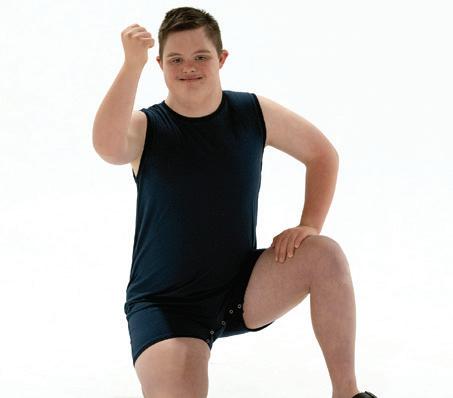


HERE’S WHAT OUR PARENTS ARE SAYING
“We’ve been blown away by the LusioMATE device! It’s such a simple yet smart tool which has made a huge difference to the way our daughter, Zali, engages in her physio exercises. The wide selection of games makes therapy fun and interesting while keeping her challenged and motivated to regularly complete her exercises.”
“LusioMATE helps Jon do his physio exercises while thinking about the game instead of how many more reps he has to do!! It’s been fantastic, and I just wanted to say thank you for your follow up and suggestions. He is loving the new games!”



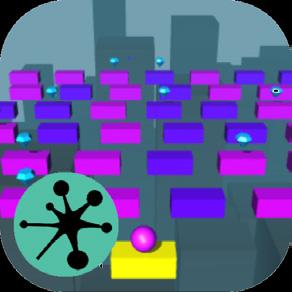





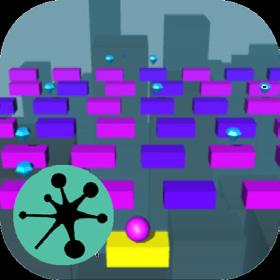


OFFICIAL PROVIDER

New Improved LusioMATE App Now Launched! Low cost, low risk with NDIS Motivates achievement of ALL movement goals Remote monitoring by clinicians Use in clinic or at home Get a quote today 1300 1 LUSIO letsplay@lusiorehab.com www.lusiorehab.com MAKING PHYSICAL THERAPY FUN MAKING PHYSICAL THERAPY FUN LusioMATE is an app with wearable sensors that attach to any part of the body and connect via Bluetooth to an ever growing number of FUN exergames created to entertain and motivate Players through their tailor made PT programs. Making Physical Therapy Fun TALK TO US TODAY 1300 1 LUSIO letsplay@lusiorehab.com lusiorehab.com • Low cost, low risk with NDIS • Motivates achievement of ALL movement goals • Remote monitoring by clinicians • Use in clinic or at home
Large bodysuits to assist everyday living
Registered NDIS Provider
www.wonsie.com.au
1. Download 2. Fill in 3. Print 4. Snap photo 5. Upload sourcekids.com.au/source-awards SCAN FOR MORE INFOMATION
56 SOURCEKIDS.COM.AU

She was a happy, active child, involved in pony club and gymnastics, but at age 18, when her school friends were discovering their independence, Nell was losing her ability to walk and living in chronic pain. The diagnosis – FND.

The year it ALL CHANGED
Iam a 26-year-old woman from the Bega Valley on the NSW/VIC border. I have a love of horses and photography. Growing up I was very active, happy and healthy, until developing headaches at age 10, and some wrist pain after falls at pony club and gymnastics.

LIFE CHANGED
In 2014, life changed and not in a positive way. Trialling multiple medications with my GP to manage debilitating pain, I experienced side effects to a new medication – uncontrollable tremors in my arms and legs. This stopped after ceasing the medication, however, a week later, the severe and uncontrollable tremors restarted with the addition of tachycardia. During a telehealth consultation with a pain management team at St Vincent’s in Sydney, my symptoms worsened and I developed confusion, and profuse
sweating. The team and my GP decided I needed to go to hospital immediately by ambulance. I thought this would only be a small bump in the road and I would return to normal in no time. Little did I know this was the beginning of a very mentally, emotionally, and physically exhausting, and traumatising few years.
Many ambulance trips to ED, hospital admissions, MRIs (one under general anaesthetic as my tremors were constant), nerve conduction studies, new medications and specialist appointments in Sydney and Melbourne. I also required regular venesections to manage my iron overload, after being diagnosed with hereditary haemochromatosis in late 2014.
DIAGNOSIS AND PTSD
After a friend suggested researching FND, I arranged a referral and subsequent appointment at the Mater Hospital, Brisbane’s FND clinic, with a neurologist who worked alongside Australia’s top FND specialist, Dr Alex Lehn. July 2017, during this appointment, I received my official diagnosis of functional neurological disorder.
My experience of the system, especially since diagnosis, has been a mixed bag. Some doctors, nurses and allied health professionals have been kind, considerate and attentive, but sadly these have been few and far between. I have been accused of being a drug addict, attention seeker, malingerer, and more. I know this is often because health staff have been ill-informed about FND and current research, however this doesn’t change the emotional distress and trauma of these experiences. Like many, I’ve been left with significant medical PTSD.
58 SOURCEKIDS.COM.AU MY STORY
It was in 2018, my friend Natalie recommend I join the newly formed FND Australia Support Services Facebook group. Being a part of this group, I realised I was not alone in this journey. Later that year, I became a moderator on two FND Australia groups, then online support director in 2022.
Throughout the past 10 years of living with chronic illness, I’ve developed quite an interest in advocacy and peer support. Constant unpleasant interactions with the health system and government disability services have only driven my passion further.

THE REAL IMPACT OF FND
In late 2018, after three years of applying to become a NDIS participant (including a 10-month AAT process where I advocated for myself), I was finally granted access with my primary disability listed as FND. Through the NDIS, I continue to access the assistance required to live as full a life as possible.
FND has had a significant impact on my life, including my mobility. Early on in my journey, around age 18, when my friends were graduating high school and exploring their new found independence, I lost all strength in my legs and became bed and wheelchair bound, completely reliant on my father for almost everything, including accessing the toilet and bathroom. I was unable to weight bear and was experiencing severe and frequent arm tremors and jerking movements. This meant even the simplest task of feeding, or washing myself became an exhausting effort. Going from being independent to totally reliant on others, took a huge toll on me and my family. My father became my full-time carer, while also trying to run the household and take care of our animals.
My mum, in the middle of her social work studies at the time, found it devastating to see her young adult daughter requiring everyday support. This diagnosis doesn’t just impact the individual, but their entire
“I thought this would only be a small bump in the road and I would return to normal in no time. Little did I know this was the beginning of a very mentally, emotionally, and physically exhausting, and traumatising few years.”
family and support network.
Today, I’m an ambulatory wheelchair user – manual or electric depending on the day, symptoms and terrain – and at times, use Canadian forearm crutches to mobilise. Thankfully I still hold a full unrestricted driver’s licence, reviewed annually with a medical. But sometimes I choose not to drive due to FND.
SERVICES AND SUPPORT
I access numerous government supports and services including NDIS, Disability Support Pension, Disability Parking Permit, Mental Health Treatment Plan and GP Care Plan.
Support workers come daily to help me shower (wash my hair), change bed linen, do my washing, dishes and meal prep,
and a cleaner comes weekly. With NDIS assistance, I access therapies to help me manage day-to-day, including myotherapy, podiatry and psychology, also engaging an OT, for home mods and assistive technology reports.
I still experience brain fog, migraines and complex regional pain syndrome (CRPS) which has made study almost impossible. Although, I’m hopeful that after treatment for CRPS, I’ll be able to return to my Cert IV in Mental Health Peer Support and get my qualification, which will lead to meaningful paid employment.
I look forward to a future of endless opportunities.
By Nell Allen-Coen
ISSUE 34 AUTUMN 2023 59
PREDICTIVE PERSONALISED





wellness products A brighter way to shop for At BrightSky, we’re about supporting you on your unique path through wellness, to help you maintain and improve your health and support you to live your best life. Our convenient, online shop delivers an extensive range of Continence, Wound Care, Skin Care, Nutritional Supplements & Specialised Foods, Respiratory Products, Daily Living Aids, Pressure Management and Personal Protection Equipment (PPE) direct to your door. Shop our reliable, discreet, home delivery service now. www.brightsky.com.au orders@brightsky.com.au 1300 88 66 01 To book your free assessment email admin@timmermansmethod.com.au or phone 0411 696 839 Adelaide • Melbourne Combining parent education and intensive therapy to unlock childrens’ potential. The new standard in Intensive Therapy CME | TheraSuit | Powerplate | Parent Education pjama.com.au PjamaDownUnder Bedwetting alarm with direct connection to Pjama App Smart textiles identify leaks quickly Individual predictive guidance during treatment A complete system for monitoring & motivating WHOLESALERS: BRIGHTSKY, EVERYHUMAN, MEDICALSTORE
BEDWETTING TREATMENT Bedwetting Alarms & Protection Pyjamas Achieve successful results 60 SOURCEKIDS.COM.AU
Let’s start a bright future for your child.
Our passionate team of health professionals is here to help your child on their therapy journey. We offer evidence-informed therapies tailored to your unique child and family.


Help your child thrive
• Occupational Therapy
• Psychology
• Speech Pathology
• Early Intervention
• Early Start Denver Model
• Physiotherapy
• Dietetics
Book an appointment with one of our therapists today.
To find a clinic near you visit earlystartaustralia.com.au
SOURCE MAMA
I NSPIR E, EMPOWER , UNITE
We invite you to join the most exclusive, inclusive club Source Mama. Unapologetically candid, uncut + heartbreakingly real, whilst uniting, elevating and fiercely empowering. Join the greatest pride of lioness in our community that supports mums raising children with disability and additional needs.
Mums raising children with a disability
Join the Source Mama community now!
SOURCEMAMA.COM.AU @sourcemama
ISSUE 34 AUTUMN 2023 61
Kicking goals FOR INCLUSION FOR INCLUSION
Australian Rules Football is the nation’s most-watched sport. But the key to its success is the network of grassroots clubs and programs around the country. And in recent years, their inclusive programs have grown exponentially. No matter if you’re aiming to be the next Dusty, Buddy, Tayla or Daisy, or just looking for a fun start to your weekend, AFL is the game for all abilities.

62 SOURCEKIDS.COM.AU
NAB AFL AUSKICK
NAB AFL Auskick is the best way to introduce kids to Aussie Rules. It’s all about fun, getting hands (and feet) on the ball and constantly being involved in exciting activities. No AFL experience? No worries! Auskick offers an inclusive environment for everyone aged five to 12-years-old at any skill level. There’s no tackling or other contact, and the aim is always to have a great time.
There are various specialised Auskick programs for people with disability called Access All-Abilities Centres or simply AAA. In Western Australia, these centres are called StarKick. These select centres across the country are run by coaches who specialise, or have received additional training, in supporting children with disability in an Auskick setting.

AFL WHEELCHAIR
Developed in 2015, AFL Wheelchair has gained immense popularity in a short space of time. A modified version of Aussie Rules, it is designed to enable people with a physical disability to play AFL.
AFL Wheelchair is played on an indoor court, such as a basketball court, with football posts at each end. A team is made up of five players: two defenders, one midfielder and two forwards. Players use sports wheelchairs to move up and down the court and pass to teammates by either a handball (equivalent to a kick in traditional footy) or an underarm throw (equivalent to a handball). A tackle is
performed by touching a player or their chair, and just like AFL, if a player has had prior opportunity and gets ‘tagged’ then it will be called holding the ball.
and goal umpires use rattles to make noise when the football enters the scoring zone. Currently there is a competition established in Victoria, with planning underway for programs around the country.
Want to give it a try at home? The audible Sherrin footballs are available to purchase through their website. sherrin.com.au/audible-football
ALLPLAY FOOTY
Tissue warning!
Scan to watch Taj make his debut at Optus Stadium, and meet his hero, Joel Selwood.

Only forwards can score goals, but the same scoring system applies. If a forward handballs (eg kicks) a ball through the big sticks, then the team scores six points.
Programs and competitions are available to play around the country and there is even a pathway for the best players to represent their state or territory at the Toyota Wheelchair AFL National Championships. Victoria Blue won the 2022 title, defeating South Australia in the final.
AFL BLIND
AFL Blind is a new adapted version of Aussie Rules which enables people with blindness or low vision to play.
A game of AFL Blind is just like a traditional game of footy, but with slight adaptions to rules and modifications to equipment to provide the support required. Games are played indoors, which ensures a controlled environment to allow players to utilise their hearing. A speciallydesigned football has an electronic beeper inserted to produce sound loud enough to assist with tracking the ball. To assist with identifying the centre and location of the goals, there are flashing lights and high contrast backdrops behind the goals,
AllPlay Footy is a joint initiative between the AFL and Deakin University changing attitudes towards participation and empowering kids to play the way they want.
A range of resources for clubs, coaches, teachers, parents, health professionals and players has been developed to support kids with disabilities. There is extensive information on the AFL’s digital platform (play. afl/play/disability) where you can find practical tips and strategies, footy stories and videos. The resources have been developed using evidence-based research and by talking to people in the community, including individuals living with disability, families, coaches, and experts.
ALLPLAY FOOTY DISABILITY INCLUSION COACHING COURSE
This course helps coaches and program providers learn how to be more inclusive, so that all children and young people can play, regardless of ability. Course participants learn about inclusion and disability, and become familiar with practical, strengths-based and evidenceinformed tools and resources that will help them modify programs and coaching to create more inclusive environments. Making simple changes will greatly improve the experience at footy for all young people and their families.
Best of all, this course is FREE for anyone to access. While it is designed for coaches, the AFL encourages parents, teachers and footy volunteers to also check it out.
ISSUE 34 | AUTUMN 2023 63 AFL
The course has two core modules to complete:
• What is Disability & Inclusion?
• Supporting Emotions & Behaviours
There are also nine electives to choose from, covering some of the most common disabilities, delays and neurodivergences. These modules provide coaches with a great introduction to coaching kids with disability. It is recommended that coaches complete a minimum of two electives, but they are welcome to complete them all. Elective modules are:
• Anxiety
• Autism
• ADHD
• Blindness & low vision
• Cerebral palsy
• d/Deaf & hard of hearing
• Developmental Coordination Disorder
• Intellectual Disability
• Physical Disability
For more info on the course, head to afl.androgogic.com.au
GOOGLE FOOTY SKILLS LAB
Google, in partnership with the AFL, has created the Footy Skills Lab, an artificial intelligence-powered tool to help AFL fanatics sharpen their skills, straight from their smartphone.
At the time of launch in 2021, the need to improve access to training was greater than ever – as people across the country were in lockdown and community sport was paused. While Aussies can now join their teams back at the ground, there is always more to be done to improve access
to professional coaching. Google, working with the AFL’s Disability Inclusion team, continue to enhance Footy Skills Lab and have introduced new features so that players who are blind or have low vision, are deaf or hard of hearing, and those who use a wheelchair can also utilise the platform as a training tool. New accessibility features include:
• The option to complete activities standing, or in a wheelchair. Learn from AFL Wheelchair stars who will help develop players’ ball control and chair skills.

• Closed captions are now optional, so the screen is not too busy for people with low vision.
• New cues when players finish an activity, including strong visual cues with colours and new audio at the end of an activity, so people who are deaf or hard of hearing know it’s finished.
• Go at your own pace – players can now slow the playback speed to 0.5 if it is helpful to have the activity slowed down. Whether players are at the top of their game, or playing for fun, anyone can join in and sharpen their skills this season. To find out more, head to play.afl/footyskillslab
MATCH DAY EXPERIENCES
With AFL teams based in five capital cities, (plus matches played at other capital and regional cities), chances are, you can see a game in-person at some point during the season.
In recent years, some venues have installed sensory zones and rooms for match days. Melbourne’s Marvel Stadium and the MCG have one, as does GMHBA Stadium in Geelong and the Gabba in Brisbane. There are plans afoot at other venues around the country to install them. The league has also just updated its sensory room guidelines for not just professional venues, but all grounds around the country looking to become more accommodating of sensory needs.
ACCESSIBLE TICKET OPTIONS
AFL venues cater for a variety of accessibility requirements. While they vary from venue to venue, options include:
Wheelchair bays
Wheelchair bay tickets for wheelchair users who will remain in their wheelchair (or mobility aid) during the match.
Easy Access Seating
Easy access seating is typically up or down a few steps and/or at the end of an aisle. These seats are in the main seating stands, but easier to access. They can be obtained by anyone with accessibility requirements who is not a wheelchair user.
Blindess or low vision
Where seating options are available for people who are blind or low vision, they will usually be located towards the front of seating stands, closer to the field of play.
Assistance Animals
The AFL welcomes visitors with trained or accredited assistance animals (such as guide dogs). Where available, relevant ticketing should be obtained to maintain the safety of the assistance animal and other spectators.
Companion Card
The AFL is a National Affiliate of the Companion Card program and provides an admission ticket for the eligible cardholder's companion at no charge. The Companion Card program is applicable at all AFL Venues.
Parking
When available, access to accessible parking at AFL venues requires a valid accessible parking permit.
Rebekah Devlin
64 SOURCEKIDS.COM.AU AFL
The Walking
Specialists
MEYWALK
A unique weight-tailored spring-suspension that helps natural gait development.
• Easy transfers with a built-in swing bar that lowers and raises the seat and trunk support.
• Grows with you with a Universal Trunk support system.
BUDDY ROAMER
A posterior walking aid that provides partialweight bearing postural support with mobility.

• Allows you to walk around freely and unaided.


• Designed to meet mild, moderate and complex users.
rtdaus.com.au
FLUX
A posterior walking aid which promotes upright posture and natural walking movements.
• Grows with you – Height, Vertical & Horizontal adjustment.
• Available in 4 sizes – to support up to 100kg
• Wide range of colours
• Strong & reliable – Made in Germany
Distributed in Australia by RTD – Rehab Technology Distribution Contact us on: therapy@rtdaus.com.au to find your local dealer
RISKY BUSINESS
WHAT IS ‘RISKY PLAY’?
All parents feel an overwhelming need to protect their kids, but for many of us, our mama/papa bear instincts are particularly well-honed (especially if you have a child with physical challenges, or who is prone to falls or bolting!). However, there are important developmental benefits to supported ‘risky play’ says OT, Lisa Hughes.
Risky play involves children exploring their surroundings and encountering situations that they are not expecting and are unsure of the outcome. Exhilarating, exciting, and physically demanding activities such as climbing, jumping, balancing, or rough play are all examples of risky play. It is considered a natural progression in children’s learning as they explore new environments, challenge themselves, and broaden their skills by stepping outside of their comfort zone and pushing the limits of their current capabilities. This encourages the children

66 SOURCEKIDS.COM.AU
to problem solve and manage the risk that is presented to them. Children that are allowed to engage in risky play are more likely to develop better learning, perception, and judgement skills, as well as increased independence and mental wellbeing.
Understandably, it can be difficult for parents to watch their child engage in risky play without feeling compelled to change the environment or remove their child entirely. As a result, it is critical to consider the concept of 'as safe as necessary' rather than 'as safe as possible'. This means we can still allow the child to engage and navigate their way through those risky situations, while also facilitating their learning experience to ensure that serious injuries are avoided, yet opportunities for their development aren’t removed. The goal as a parent would not be to remove the risk from the child's environment, but rather to control the risk and guide the child in problem solving and risk management.
WAYS YOU, AS A PARENT, CAN HELP FACILITATE ‘RISKY PLAY’ FOR YOUR CHILD
While it may be difficult, it is important to refrain from creating an overly controlled play environment for your child. Although it is still essential to keep the environment ‘as safe as necessary’, parents must also take a step back so that children have
Benefits of risky play
RISKY PLAY IS A NATURAL PART OF A CHILD’S ENVIRONMENT AND IS AN IMPORTANT STEP IN THEIR DEVELOPMENT. THERE ARE KEY LIFE SKILL BENEFITS THAT ARE GAINED, INCLUDING:
learning opportunities, while avoiding serious injury.
• Instead of simply giving instructions, have conversations with your child about potential risks, then guide them in problem solving and planning what they will do in those ‘risky’ situations. i.e. “Do you think you could fall and hurt yourself doing that?”, “Is there another way you could do that without hurting yourself?” or “Where do you think you should put your foot next?”.
• Talk to your child about risk, even if there aren’t any present at the time. This will allow for discussion about hypothetical scenarios, enabling them to think about how they can stay safe before potentially getting stuck in an actual risky situation where stress can make it difficult, even impossible, to think straight and make sensible decisions (e.g. trying to climb on monkey bars).
• Allow your child to engage in play involving elements such as speed and height that have a risk of falling or
Increased resilience and persistence when completing challenging daily activities and tasks.
The ability to test physical limits, develop their understanding of their gross motor skills, and learn to avoid or adjust to dangerous environments and activities.
Improved balance and coordination. Increased ability to assess and make a judgement surrounding risk within their environment.
Improved awareness of the capabilities and boundaries of their own bodies. Understanding consequences within risky situations and learning from these to adapt behaviour in future similar situations.
Improved independent problem solving.
inability to control speed, potentially resulting in crashing into objects or other people, however not too dangerous that it will cause serious physical injury.
• When your child is engaging in risky play, ask open-ended questions. For example, if your child wants to climb higher on the playground equipment, rather than saying ‘no’, ask them what they think will happen if they climb higher, discuss how they need to hold on tightly, or set limits on how high they can climb. This enables them to problem solve and teaches them to take responsibility for their own safety by assisting them in identifying and managing risks in their play.
Lisa Hughes is director of Occupational Therapy Helping Children, a team of OTs in Sydney’s Frenchs Forrest dedicated to helping children thrive; offering one-onone supports, as well as parent workshops and teacher training sessions. occupationaltherapy.com.au

“Children that are allowed to engage in risky play are more likely to develop better learning, perception, and judgement skills, as well as increased independence and mental wellbeing.”
ISSUE 34 | AUTUMN 2023 67 THERAPY
& Watches Reads

Books and shows on our radar right now…



WHAT’S HAPPENING TO ELLIE AND TOM?
A great resource for parents to share with their children and tweens about the emotional and physical changes that puberty brings. With easy-to-follow language and positive, factual messaging, these simple picture books tell the story of Ellie and Tom as they enter puberty. They are ideal for autistic children or those with developmental delays and provide a perfect starting point for parents and carers to discuss things further. sensoryoasisforkids.com.au



FROM THE HEARTS OF MUMS, BY JULIE
 FISHER
FISHER



From the Hearts of Mums tells 13 deeply personal stories from mums around the world who have children with Down syndrome. Each mum shares their journey from diagnosis to present day – the highs, the lows and everything in between, but with one common theme... absolute determination and all-consuming, unconditional love. From the Hearts of Mums is being launched on World Down Syndrome Day, March 21. facebook.com/ theunexpectedjourneybook

Soft Play Weighted Animals Registered NDIS Provider Sensory Fidgets Online Workshops Sensory Feeding Tools Sensory Calming Tools Sensory Learning Tools Autism Breathing Tools Sensory Listening Tools Sensory Workout Products
Headphones www sensorytools com au
Fidget Toys
68 SOURCEKIDS.COM.AU
FOREVER BOY, BY
 KATE SWENSON
KATE SWENSON
Kate Swenson is the creator of ‘Finding Cooper’s Voice’ Facebook page. In her powerful memoir about motherhood and unconditional love, Kate shares the story of her non-verbal autistic son, Cooper. But mostly, it is a story about her own evolution. Through hard work, resilience, and personal growth, Kate comes to learn that Cooper isn’t the one who needs to change... she is. And it is this transformation that leads Kate to acceptance, and ultimately, joy. amazon.com
BETTER DATE THAN NEVER
SUMMER FOUNDATION’S NDIS PODCAST

Finding the NDIS a tad difficult to navigate? You’re not on your own there!
Hosted by Dr George Taleporos, the Summer Foundation’s Reasonable and Necessary: Making Sense of the NDIS podcast aims to simplify the NDIS for participants and their families. Episodes cover a variety of topics including NDIS fraud and dodgy providers — tips to protect your plan, what to do if you are unhappy with your NDIS services and what NDIS participants really need from their support workers. You can watch on the website or listen via iTunes or Spotify. summerfoundation.org.au
Have you caught Better Date Than Never yet? From the creators of Love on the Spectrum, the ABC’s Better Date Than Never follows the dating endeavours of people with diverse abilities, sexualities and backgrounds as they search for love. Get the tissues ready for those happy tears, this is feel-good TV at its best. iview.abc.net.au/show/ better-date-than-never

INTENSIVE THERAPY IN THE HOME
WHAT IS THE PROGRAM ABOUT?
An innovative program for babies and children with cerebral palsy & other neuromuscular challenges, who are medically stable and able to work with a therapist they’re not familiar with. Designed to address each child & family’s chosen daily task goals during 12 hrs over 3 consecutive days; by Dr Kate Bain HScD, B App Sci(OT), Dip OT; Adjunct lecturer SCU; Adv OT Instructor NDTA (USA); registered NDIS provider with HIC number (for health insurance claims).
The intensives are designed to complement the child’s regular therapy & therapists are invited to attend. Play & engaging activities help to make therapy enjoyable.
Session fees are NDIS-approved rates for OT@ $193.99 per hour. Full flyer/application available - Email: kathrynmbain@gmail.com
paediatricworkshops.com.au

Listen!
in the
We live the
We know the
We believe
unthinkable.
unbelievable.
incredible. sourcekids.com.au
Join the Source Kids community SOURCE KIDS IS ON A JOURNEY. COME JOIN US.
@sourcekidsmagazine @sourcekids
ISSUE 34 AUTUMN 2023 69 WATCH, READ & LISTEN
Walkers
Here is a great selection of walkers, some you’ll find at our National Expos. Come ‘n’ try!
BUDDY ROAMER
Manufacturer: Symmetrikit
Suppliers: AP, AX, DJ, GLM, PAFL, DO, ILSK, GTK, RTD
Weight: Up to 100kg
Height: 70 to 200cm
• A posterior walking aid that provides partial weightbearing support. Designed to meet mild, moderate and complex users’ needs.
• Central positioning bar with abduction pad to help improve gait.
• Handholds and bumper bar, as well as shoulder positioners minimise fatigue.
EXPLORER MINI
Manufacturer: Permobil
Supplier: ILSK
Weight: Up to 15.9kg
Height: Up to 100cm
• Aids in maximising early learning and empowers development mobility.
• An ergonomic device with multiple weight-bearing surfaces to help promote safe, stable, upright postures.
MARCY
Manufacturer: Schuchmann
Suppliers: AP, AX, DJ, GLM, PAFL, DO, ILSK, SNS, GTK, MF, JJD
Weight: Up to 65kg
• The handles can be adapted in height and width and adjustable forearm supports stabilise the gait for extra stability.
• Friction brakes on the rear wheels slow down the speed, the optional parking handbrake gives more control, in combination with the lower armrests.
• Comes in four sizes; sizes 3 and 4 can be folded down for easy transport.
HOGGI CRUISER
Manufacturer: Hoggi
Suppliers: DJ, GLF, GTK, PAFL, DO, ILSK, RTD
• With a compact design, the Cruiser anterior walker is ultra-manoeuvrable and is the perfect companion for the first steps.



• The newly designed brake can be operated with little effort, even by small children.
• Scissor folding mechanism allows the Cruiser to achieve a minimal folding size.

• Provides opportunities to improve strength, endurance and postural control.
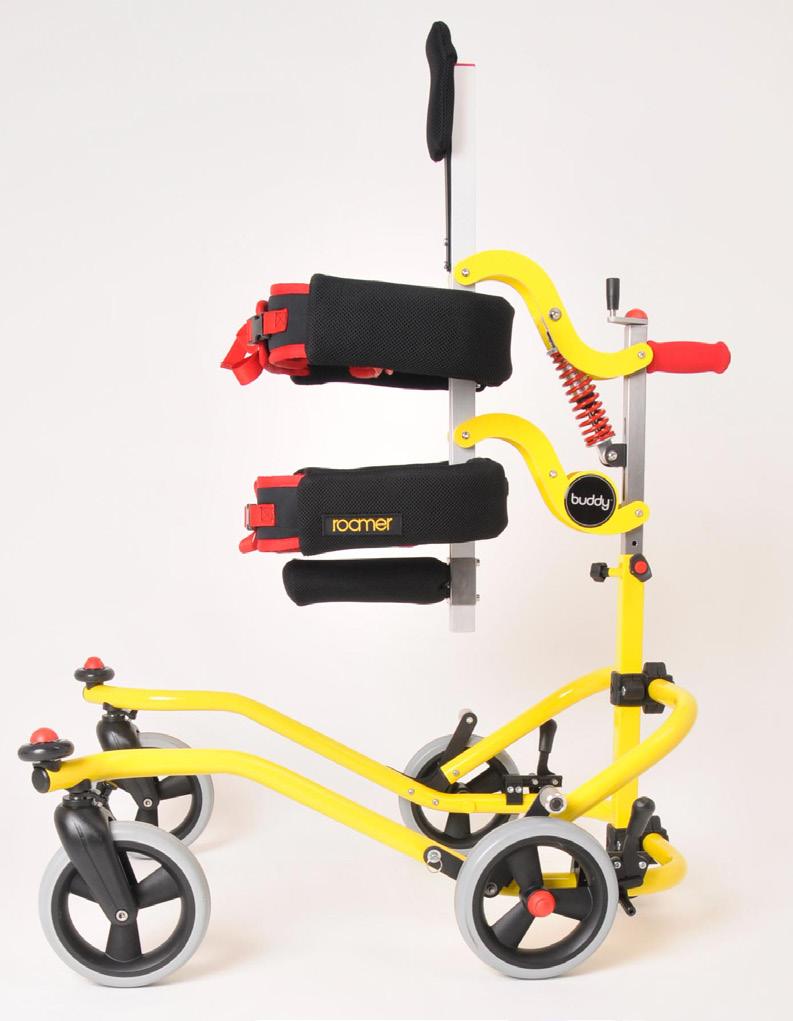
NEW COMING IN 2023 C Y
70 SOURCEKIDS.COM.AU C C Y A Children Youth Adults KEY C Y A C Y A
CROCODILE 0
Manufacturer: R82
Suppliers: E, ILSK
Weight: Up to 30kg
Height: 55 to 105cm
• The Crocodile 0 is the smallest in the Crocodile family, for those early steps
• Can be used for full weightbearing, or as a gait trainer for children who can only take partial weight-bearing.

• Two new accessories available, a grip bar and a surrounding support, which can be useful for children who require postural support.
FLUX WALKER
Manufacturer: Hoggi
Suppliers: AP, AX, AR, DJ, GLM, PAFL, DO, ILSK, SNS, GTK, MF
Weight: Up to 100kg
Height: Up to 100cm
• A posterior walking aid which promotes natural walking movements.
• Grows with you — adaptable, with height, vertical and horizontal adjustments. Comes in four sizes.
• Sturdy anti-tippers to keep the user safe, a foldaway seat that can be moved aside to ensure easy walking, plus has the ability to carry a school bag.
DASH WALKER
Manufacturer: R82
Suppliers: AR, SAP
Weight: Up to 86kg
Height: 70 to 200cm
• Encourages trunk extension and upright posture by providing support from behind.
• Front swivel wheels enhance ease of turning and are skid resistant, making it ideal for indoor use.

• Folds easily for convenient transporting.
COME AND TRY!
Most of these products will be on display at our expos: sourcekids.com.au/disability-expo
*Chat to a product specialist about your child’s individual needs
CROCODILE R82
Manufacturer: R82
Suppliers: E, ILSK, ACM
Weight: Up to 80kg
Height: 70 to 180cm
• A walking aid aimed at harmony, balance and rhythm for children and young adults who need supplementary assistance with their daily walking.
• Placed behind the child, the frame allows freedom of movement and facilitates walking in the upright position.

• Available in three sizes.

ISSUE 34 | AUTUMN 2023 71 PRODUCT REVIEW C A C Y C Y A
FIREFLY UPSEE
Manufacturer: Firefly
Suppliers: AME, AR, ILSK, S
Weight: Up to 25kg
• A revelation for many kids with neuromuscular disorders, it comes in four sizes for safe, stable, upright postures.
• The Upsee kit is made up of three parts; an adult hip-belt, a child harness, and shared sandals.
• Facilitates gradual weight-bearing, standing, and walking with the assistance of an adult.
LECKEY PEDAL
Manufacturer: Leckey
Suppliers: DJ, GLM, PAFL, DO, ILSK, SNS, GTK, RTD
Weight: 25 to 80kg
Height 63.5 to 149cm
• A revolutionary elliptical trainer which attaches to the size 2 and 3 MyWay frame. It helps improve strength and functional ability by facilitating pedalling in an upright extended, rather than flexed, position.
• Targets and strengthens anti-gravity muscles in an elliptical action, which is more like stepping, to help support gait therapy goals.
• Improves strength and functional ability and is ideal for giving kids the opportunity to be active and have fun.
LECKEY MYWAY
Manufacturer: Leckey
Suppliers: AP, AX, AR, DJ, GLM, SM PAFL, DO, ILSK, SNS, GTK, S, RTD
Weight: 25 to 80kg
Height: 63.5 to 149cm
• Harness moves with the child, creating a more natural, upright movement pattern.
• Superior postural support allows children to focus on moving, rather than feeling unstable or trying to keep their head up.
• The MyWay maximises opportunities for independent movement with the supportive harness and minimalist openfront, hands-free design.
ORMESA GRILLO
Manufacturer: Ormesa
Suppliers: AP, AX, ACM, DJ, GLM, PAFL, DO, ILSK, SNS, GTK, MF, RTD
Weight: 35 to 110kg
Height: 75 to 190cm
• Wheel features include anti-reverse, rear drag, front and back directional locks. Wheels are suitable for both indoor and outdoor use.
• Adjustments are fast and safe and can be made while the child is in the walker.
• Comes in four sizes, with rear and front-drive options.
RIFTON PACER GAIT TRAINER
Manufacturer: R82
Suppliers: ACM, AP, AX, AR, M, MX
Weight: 50 to 200kg
• The versatile Pacer Gait Trainer comes in four sizes and is fully adjustable, without the need for tools.




• Front swivel wheels enhance ease of turning and make it skid-resistant, so it’s ideal for indoor use.
• Can be configured in so many ways, accommodating every ability.

C Y C Y C Y 72 SOURCEKIDS.COM.AU C Y A Children Youth Adults KEY C Y A C
SNUG SUPPORT
MUSTANG
Manufacturer: R82
Suppliers: E, ACM
Weight: Up to 30 to 80kg
Height: 40 to 130cm
• Provides snug support for the upper body whilst also keeping the child’s pelvis gently supported. The upright, slightly forward-leaning position stimulates the walking function.
• Developed as an anterior walker but can also be used as a posterior gait trainer, depending on child’s ability.


• Available in four sizes and suitable for children and young adults.
SUPPLIERS
MEYWALK 4 MICRO GAIT WALKER

Manufacturer: Vela
Suppliers: AP, AX, DJ, GLM, PAFL, DO, ILSK, SNS, GTK, MF, RTD
Weight: Up to 60kg
• Meywalk4 mimics natural gait and with its “three clicks and you’re in” easy transfer system, it means you spend less time adjusting and more time walking.
• Use it facing backwards in ”disco position” for therapy and activities.
• Tilt in space: posterior or anterior pelvic support for natural hip rotation and 360˚ controlled steering. Has tool-free adjustment and comes in four sizes.
NIMBO WALKER
Manufacturer: Vela
Suppliers: AR, DJ, GLM, PAFL, DO, ILSK, SNS, GTK, MF, M, RTD
Weight: Up to 125kg // Height: Up to 104cm
• The Nimbo line of posterior walkers support from behind for those requiring a more upright posture, which helps promote trunk extension.
• Front swivel wheels enhance manoeuvrability and ease of turning.

• Tool-free height adjustments, folds easily and comes in five sizes.
TREKKER
Manufacturer: Vela
Suppliers: AM, DO
Weight: Up to 100kg
Height: Up to 100cm
• Trekker Gait Trainers offer varying levels of support for children who require assistance with walking.
• Prompts such as forearm platforms, trunk supports, hip positioners and thigh prompts mount anywhere, tool-free, onto the frame and are easily removed when no longer needed.
• Available in three sizes: Tyke, Junior and Youth.
AVAILABLE IN THREE SIZES
Living pafl.com.au // P: Permobil permobil.com/en-au // RTD: Rehab Technology Distribution rtdaus.com.au // SPE: Specialised Paediatric Equipment at4kids.com.au // SAP: Step Ahead Paediatrics stepaheadpaediatrics.com.au // SM: Sunrise Medical sunrisemedical.com.au
ACM: AC Mobility acmobility.com.au // AR: Active Rehab activerehab.net.au // AX: APEX apexmobility.com.au // AP: Astris PME astris-pme.com.au // DJ: Dejay dejay.com.au // DO: Doability doability.com.au // E: Etac etac.com/en-au/australia // GLM: Good Life Medical goodlifemedical.com.au // GTK: GTK gtk.com.au // HIA: Healthcare Innovations Australia hias.net.au // ILSK: ILS Kids ilskids.com.au // JJD: Just Juniors Disability justjuniorsdisability.com // MF: Medifab medifab.com.au // MX: Medix21 medix21.com.au // M: Motum motum.com.au // PAFL: Professional Assistance for
C Y
ISSUE 34 | AUTUMN 2023 73 PRODUCT REVIEW C Y A C Y A C Y A
A window into Allowah
A window into Allowah








Allowah Presbyterian Children's Hospital has supported children with complex disabilities and their families for the last 70 years.
Allowah Presbyterian Children's Hospital has supported children with complex disabilities and their families for the last 70 years
hospital care
hospital care
Allowah’s clinical team provides 24 hour care. We support children and young people from birth to 18 years who have moderate to severe disabilities and medical needs – such as genetic or chromosomal disorders, birth trauma, cerebral palsy, head injuries, and conditions acquired after birth. Allowah is fully accredited and is a hospital like no other.
Allowah’s clinical team provides 24 hour care. We support children and young people from birth to 18 years who have moderate to severe disabilities and medical needs – such as genetic or chromosomal disorders, birth trauma, cerebral palsy, head injuries, and conditions acquired after birth. Allowah is fully accredited and is a hospital like no other.
As a specialist paediatric hospital and an NDIS provider, located in the heart of Sydney, Allowah has all the services you need in one place.
As a specialist paediatric hospital and an NDIS provider, located in the heart of Sydney, Allowah has all the services you need in one place.





respite stays
respite stays
Allowah's services include:
Allowah's services include:
Allowah offers short-term or respite stays in our bright, fully equipped facility in Dundas Valley. We can also provide crisis short-term accommodation. With at least one RN on site and very experienced paediatricians on call 24 hours a day, 365 days a year, Allowah provides a level of respite care second to none.

Allowah offers short-term or respite stays in our bright, fully equipped facility in Dundas Valley.
We can also provide crisis short-term accommodation. With at least one RN on site and very experienced paediatricians on call 24 hours a day, 365 days a year, Allowah provides a level of respite care second to none.

allied health
Allowah Disability Support Services is a fully accredited NDIS disability support provider. Our Allied Health team are passionate about providing targeted therapy and support to help kids reach their potential. We offer physiotherapy, occupational therapy, dietetics and speech pathology, as well as support coordination to help you access and manage the supports your child needs and uses.

carer support
At Allowah, we understand the rollercoaster ride that can come with having a child with severe disability or medical situation. We walk alongside parents,

carers and families and can provide ongoing support when things are hard. Through our Family Liaison, our Chaplain, our peer-to-peer support group MyTime, or the everyday informal support of our staff, Allowah seeks to be there for you and your child.
school holiday fun
Allowah’s School Holiday Program is open to all children with moderate to severe disabilities. The program offers one-to-one support and engaging activities tailored to your child's abilities. The School Holiday Program can be paid for from the core supports budget in your child’s NDIS plan or through private payment.


find out more at
allowah.org.au







Or scan here to send an enquiry form and we'll get in touch!

A window into Allowah
Allowah Presbyterian Children's Hospital has supported children with complex disabilities and their families for the last 70 years
As a specialist paediatric hospital and an NDIS provider, located in the heart of Sydney, Allowah has all the services you need in one place.
Allowah's services include:


hospital care
Allowah’s clinical team provides 24 hour care. We support children and young people from birth to 18 years who have moderate to severe disabilities and medical needs – such as genetic or chromosomal disorders, birth trauma, cerebral palsy, head injuries, and conditions acquired after birth. Allowah is fully accredited and is a hospital like no other.
CAN YOU HELP TO SUPPORT THE WORK OF ALLOWAH?
For the last 70 years, Allowah has served thousands of children and their families.
Allowah Presbyterian Children's Hospital is a non-profit organisation that operates through the generosity of everyday Australians
respite stays
100% of donations are spent on providing the necessary care for children and their families
Allowah offers short-term or respite stays in our bright, fully equipped facility in Dundas Valley. We can also provide crisis short-term accommodation. With at least one RN on site and very experienced paediatricians on call 24 hours a day, 365 days a year, Allowah provides a level of respite care second to none.
Help us to continue supporting children and their families. A gift of $50 or more can help us serve families and their children in the greaterSydney area.
To donate, visit: allowah org au/donate Donations over $2 are tax deductible. give today
Allowah Presbyterian Children's Hospital & Disability Support Services 8 Perry Street, Dundas Valley NSW 2117 | 02 8877 3400 | admin@allowah.org.au
NSW





S e e y ou there 2023 SYDNEY 25-26 March 2023 MELBOURNE 7-8 July 2023 BRISBANE 29-30 July 2023 PERTH 28-29 October 2023 NEW PATIENT APPOINTMENTS Available Now! ALLIED HEALTH ASSESSMENTS GENERAL PAEDIATRICIAN www.paedsinapod.com.au | 07 3177 2000 BOOK NOW 76 SOURCEKIDS.COM.AU QLD
Enabling families of children with health and disability needs

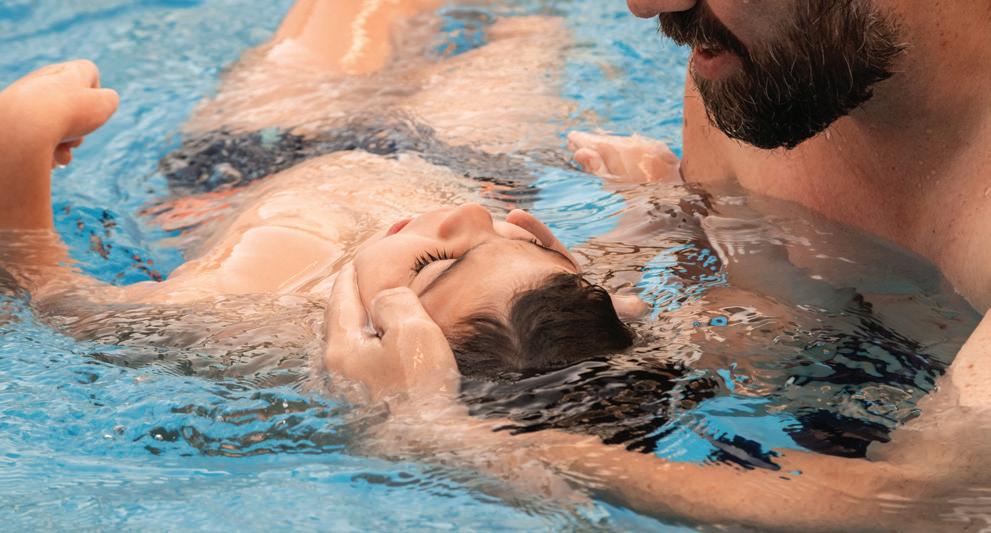



ISSUE 34 | AUTUMN 2023 77 QLD




Alternate Mobility Unit 1/5 Miller Street Slacks Creek Qld 4127 Email: sales@alternatemobility.com.au NDIS Approved “ Freedom of Motoring” NDIS Provider# 4050004526 call (07) 3474 6575 or visit www.alternatemobility.com.au To find out how to simplify your family’s transportation Get Your Family Mobile with Simple Upgrades To Your Vehicle • Van Fit Outs • Turney Seats • Hoists • Docking Stations NDIS Approved • Wheelchair Ramps & Lifts • Hand Controls • Careva Harnesses • Custom Jobs Disability Vehicle Conversion for Wheelchairs & Mobility Scooters Volkswagen CADDY GEN 5 with a lowered floor set up Brisbane Service Agents for: 78 SOURCEKIDS.COM.AU QLD







Proudly Family Owned & Operated Contact us today! Comfort & Confidence Comprehensive Continence Care & Support Services Supplier of healthcare, continence and bedding products from ALL your leading manufacturers A dedicated team of nurses and specialists here to help you with bladder/bowel care, bed/day-wetting, soiling, catheter/stoma care, product support, toilet-training and more… (03) 8201 7137 Order online at www.topcathealthcare.com.au (03) 9876 3374 Book today at conquip@suttonhouse.com.au We are a Registered Provider Contact us today! ISSUE 34 AUTUMN 2023 79 VIC


























































































































































































 With Rebekah Devlin
With Rebekah Devlin






































































































































































































































































































































































































































 FISHER
FISHER




 KATE SWENSON
KATE SWENSON
























































